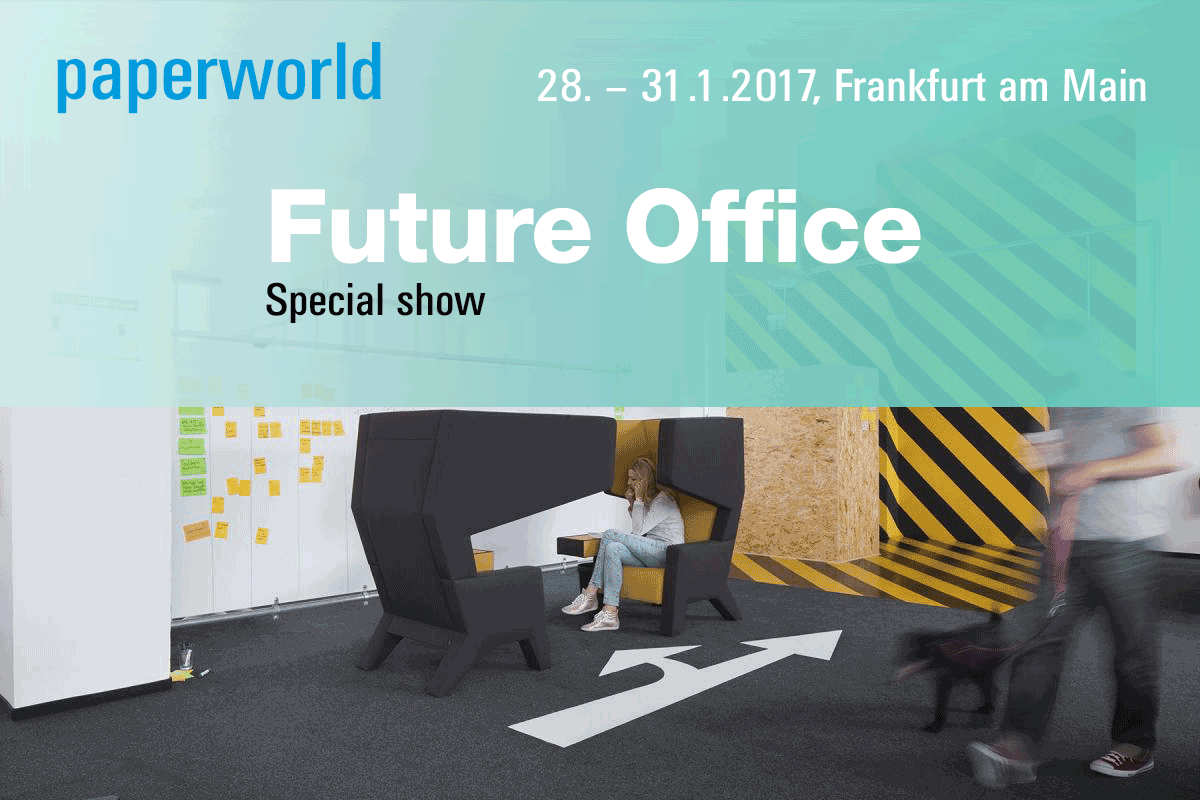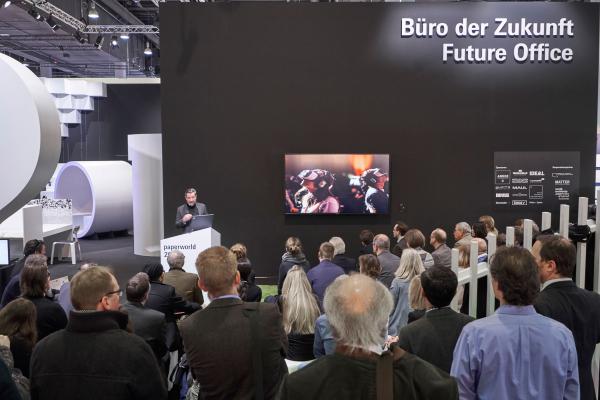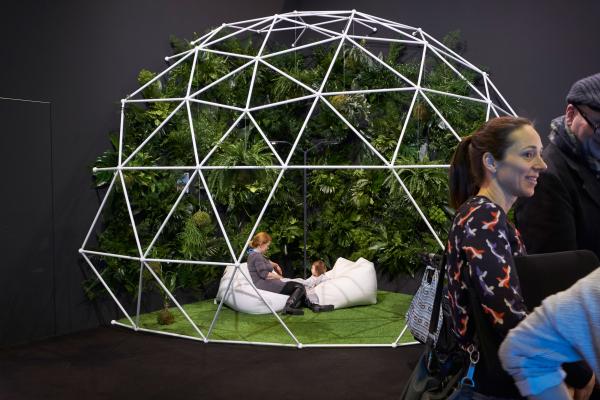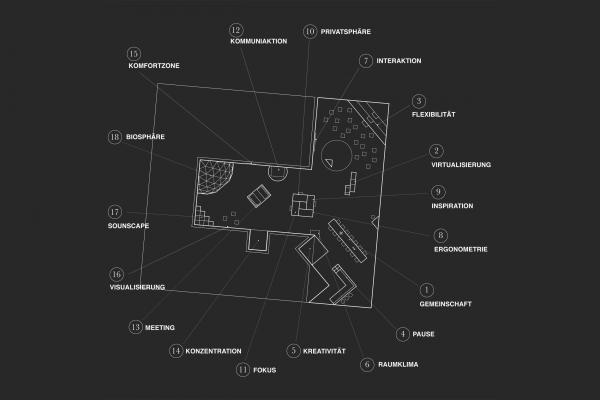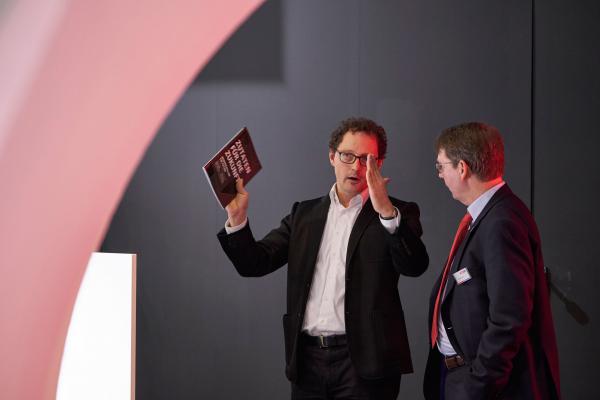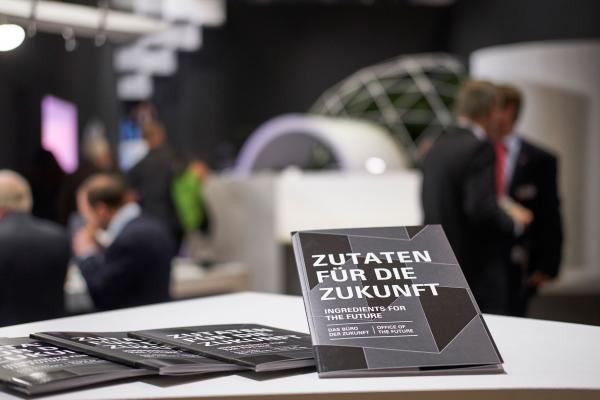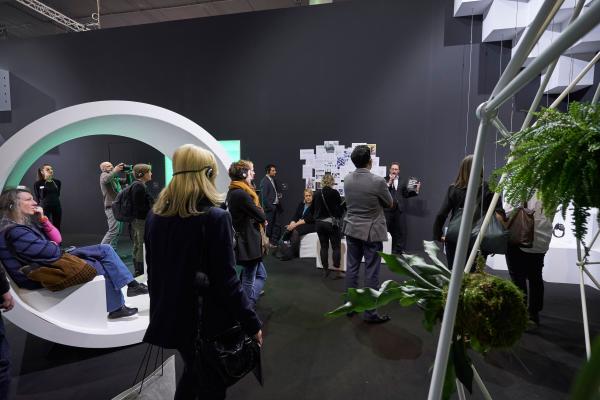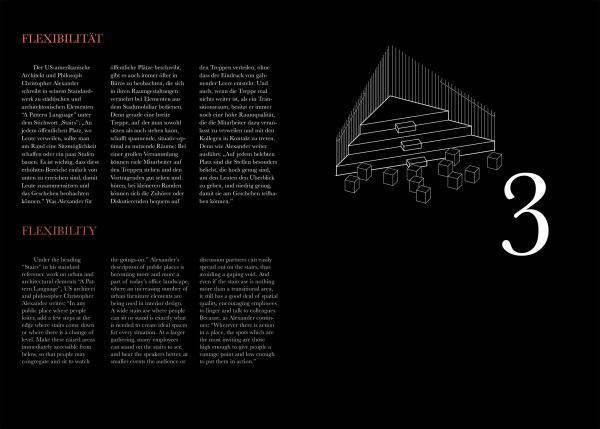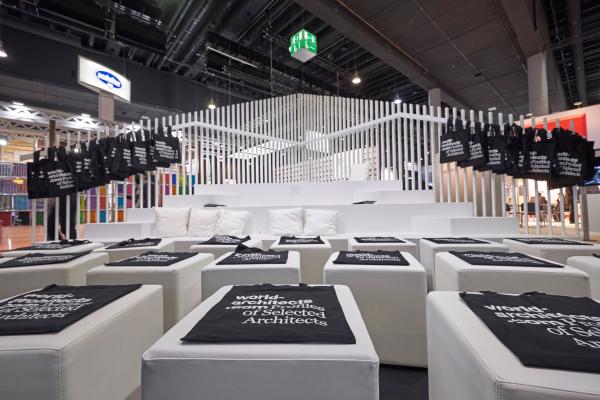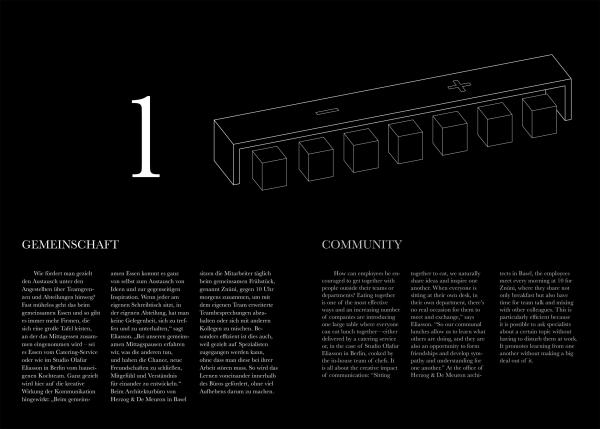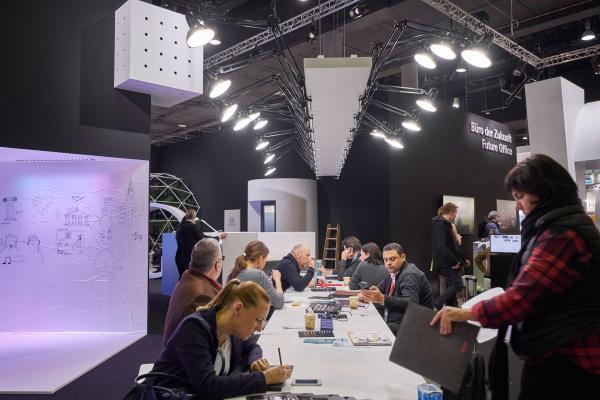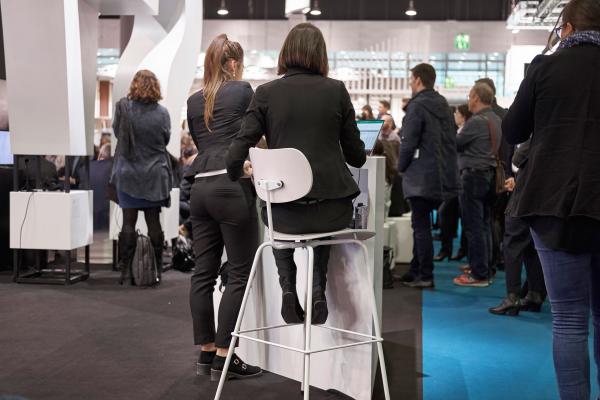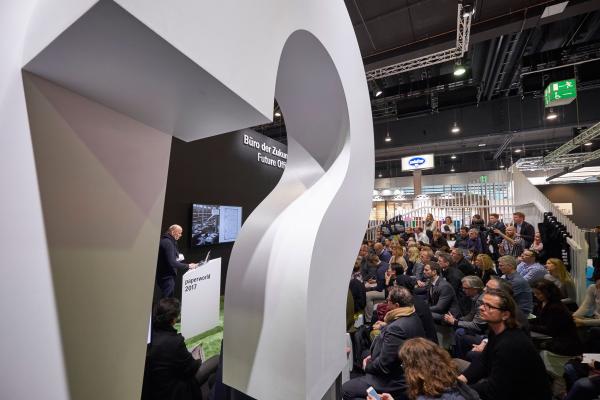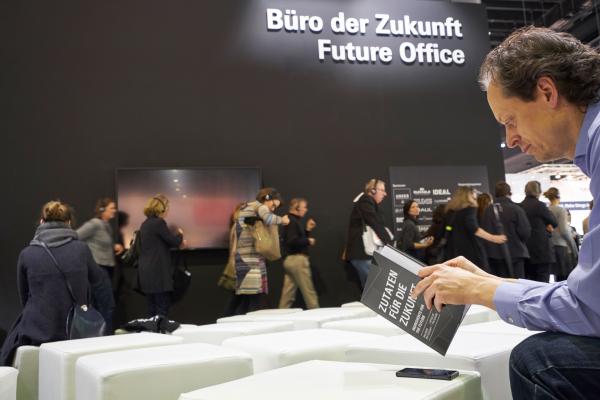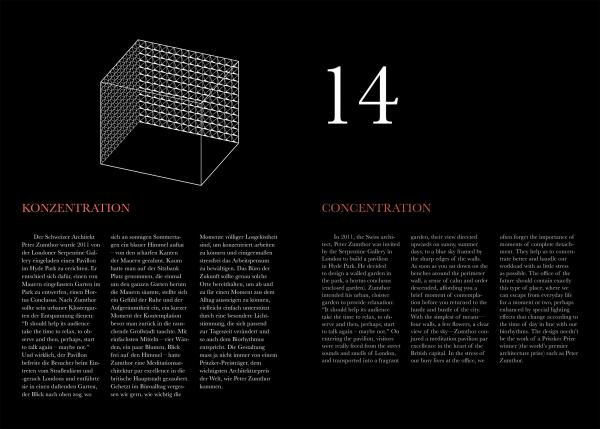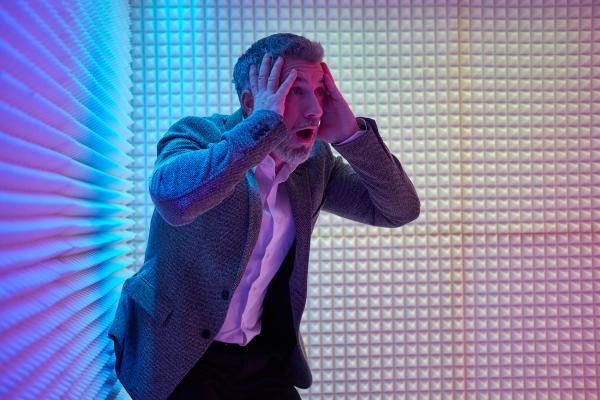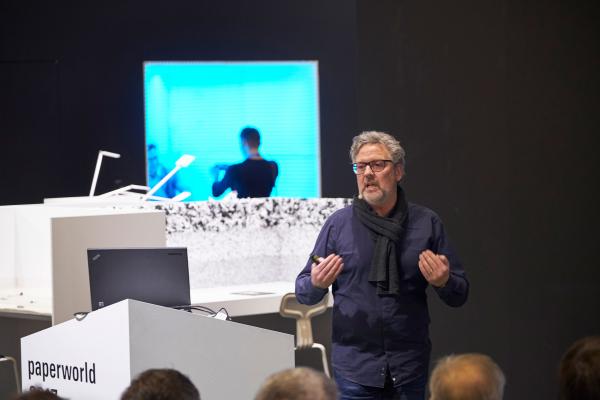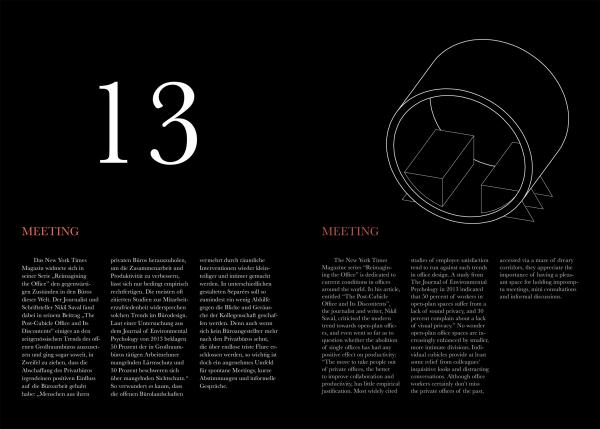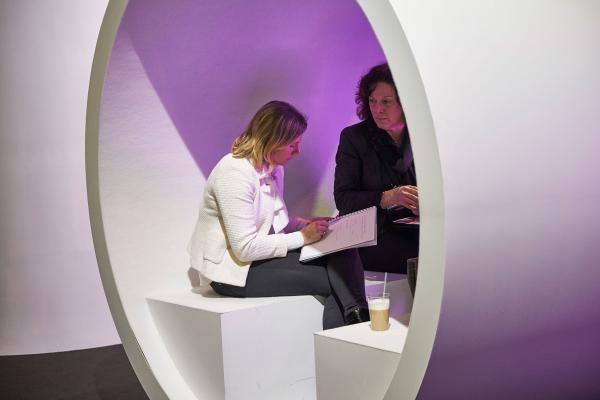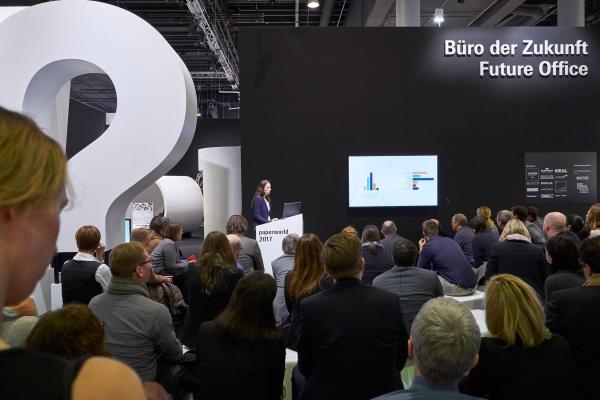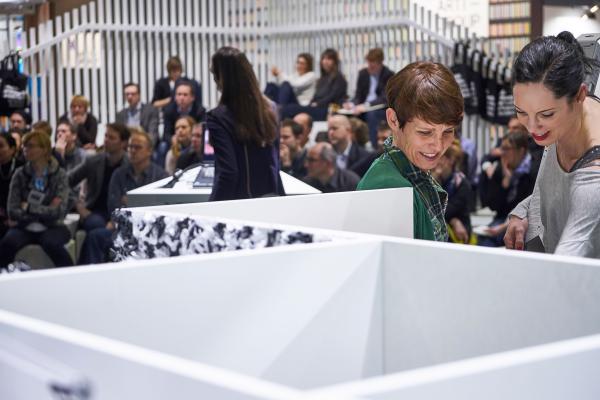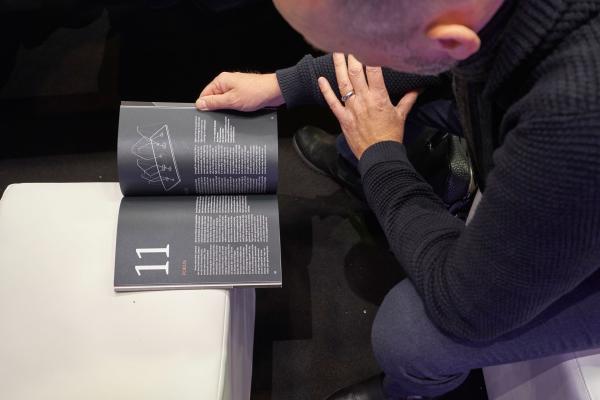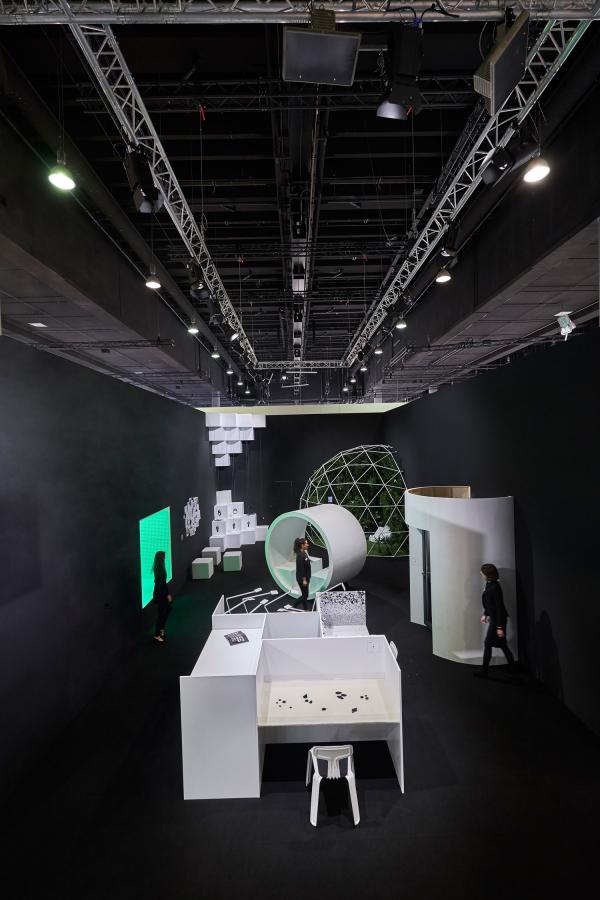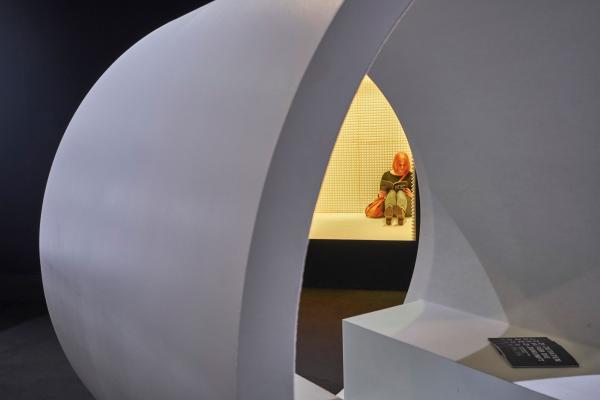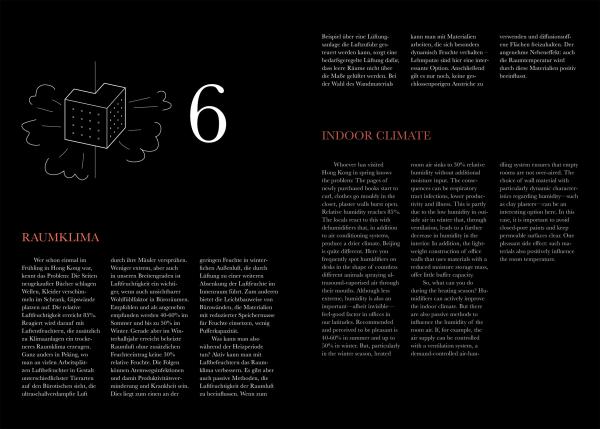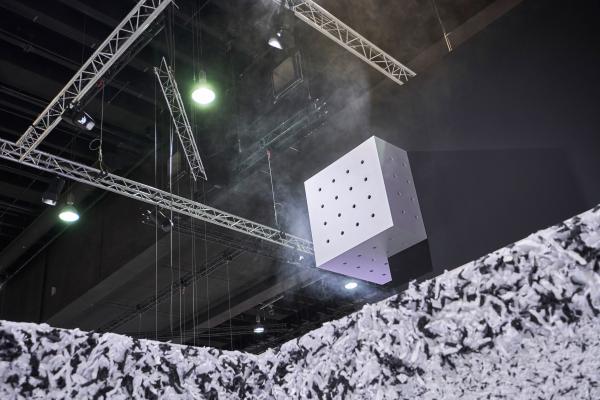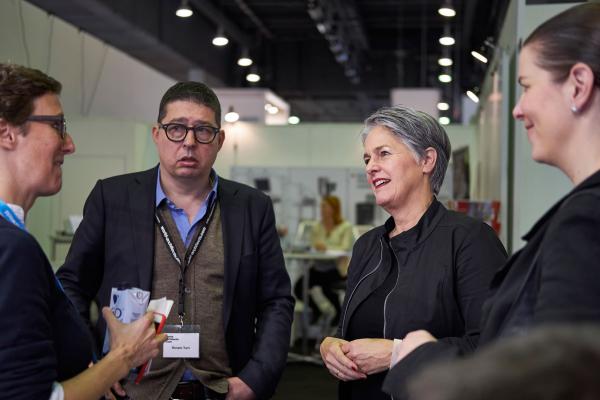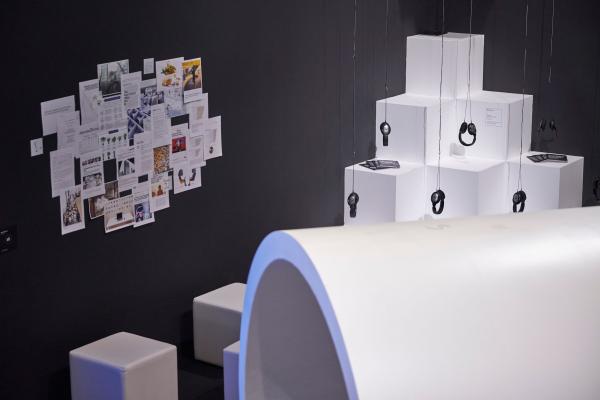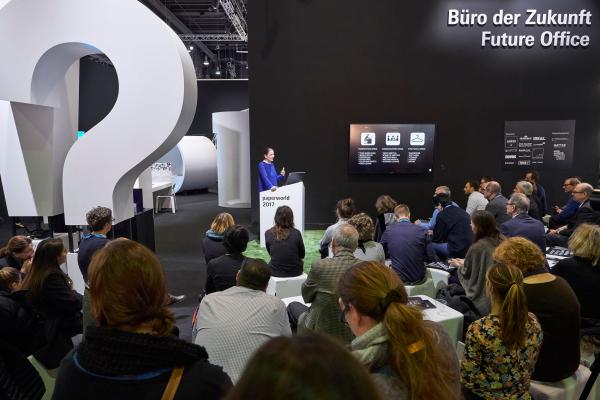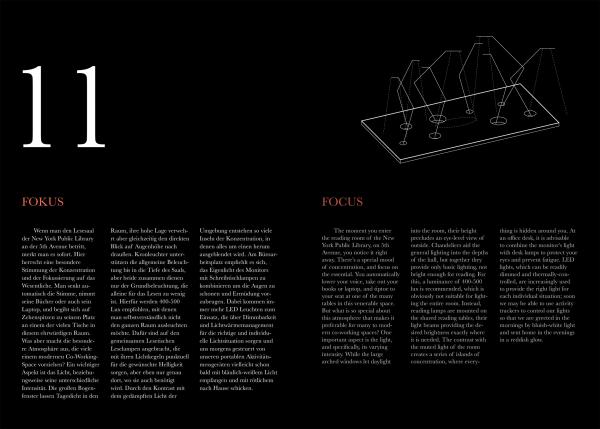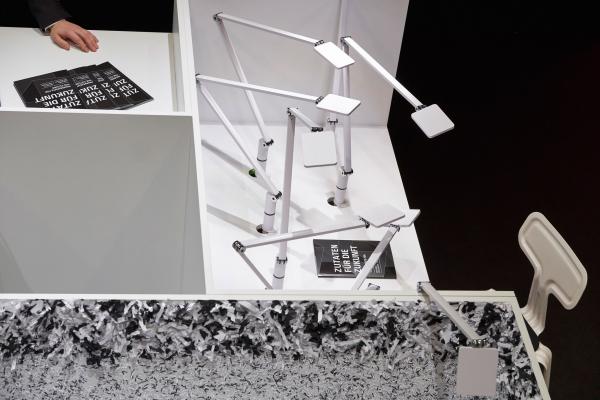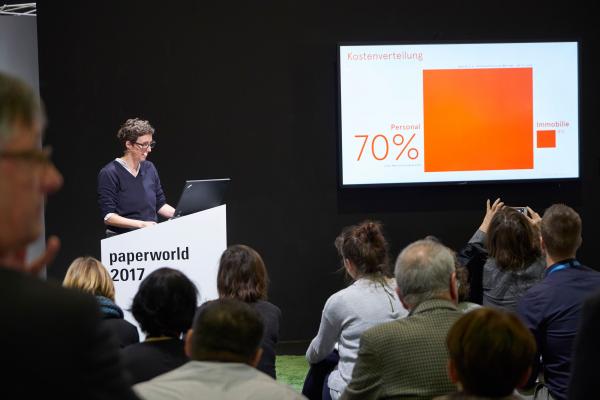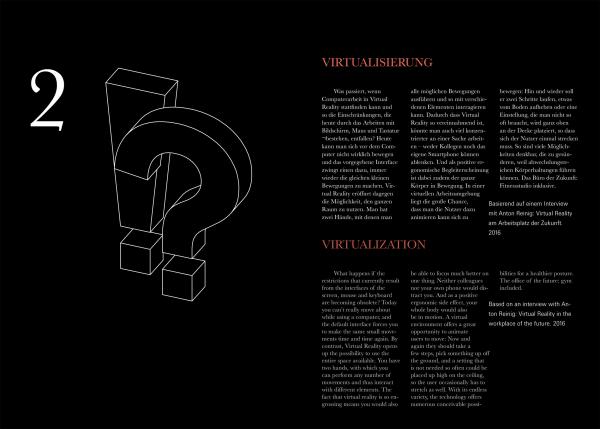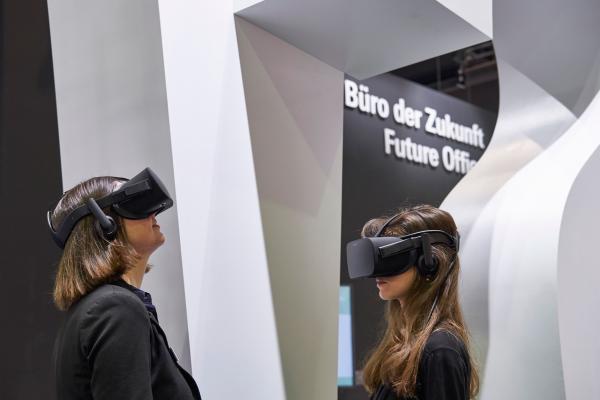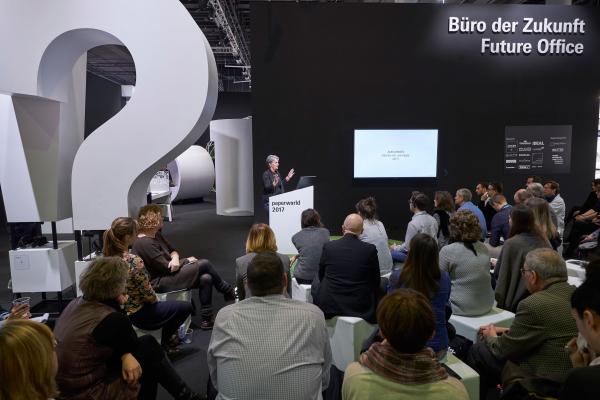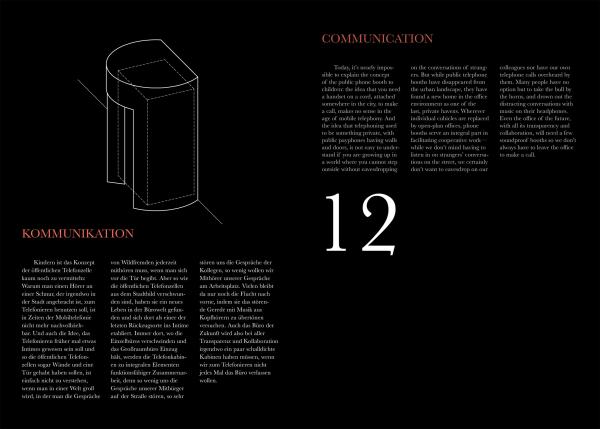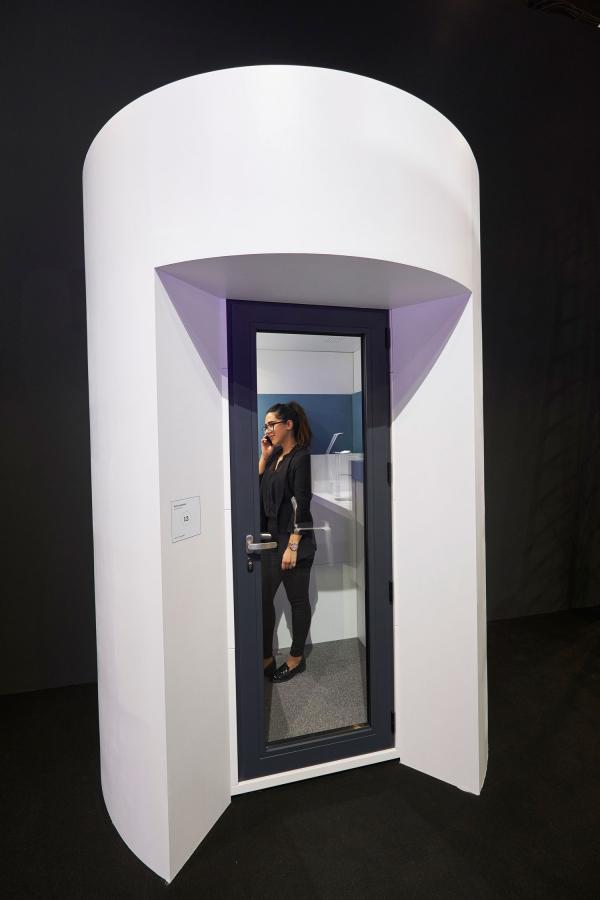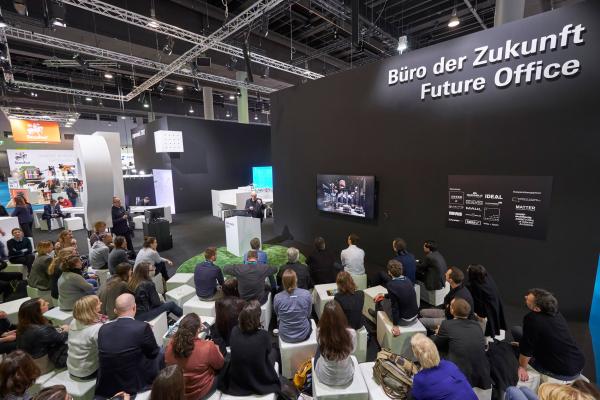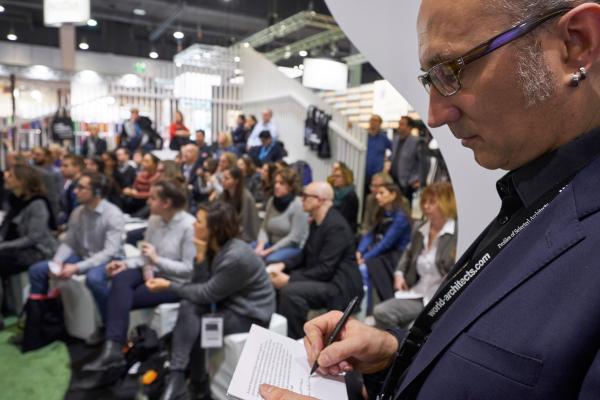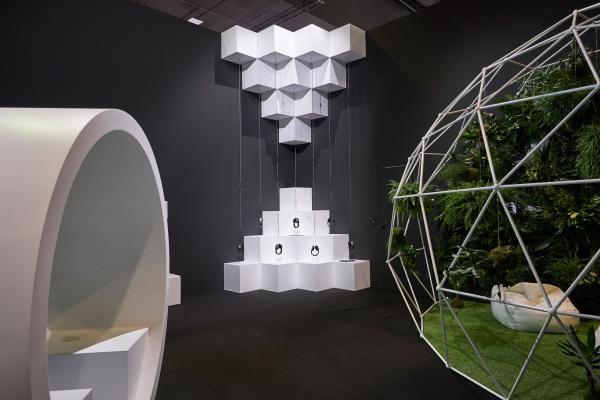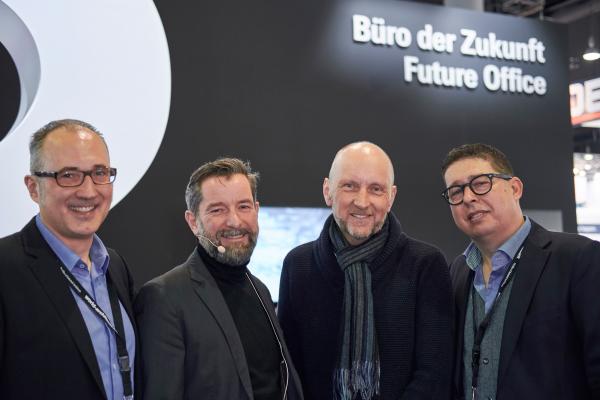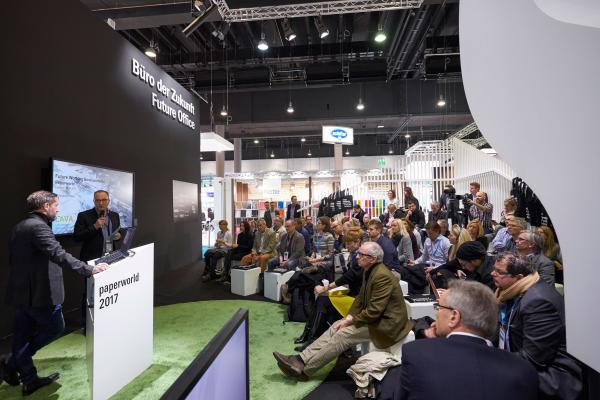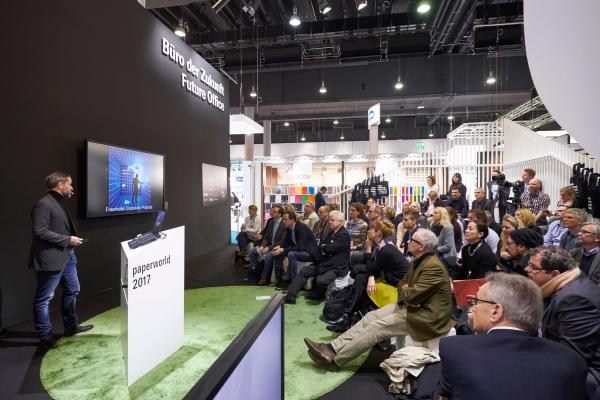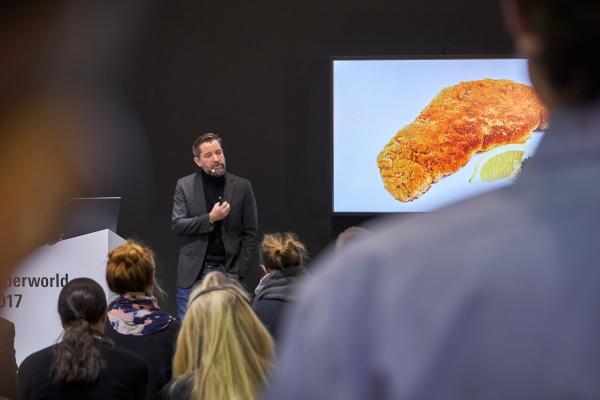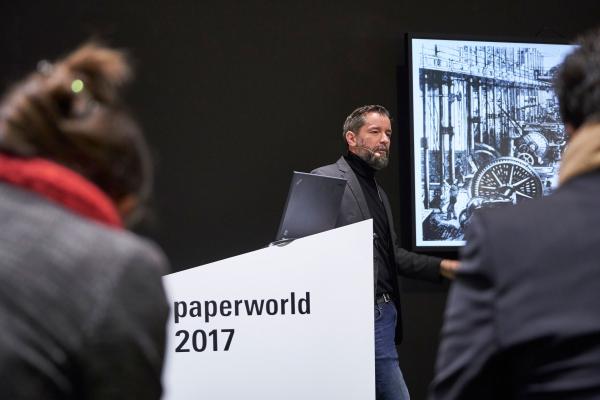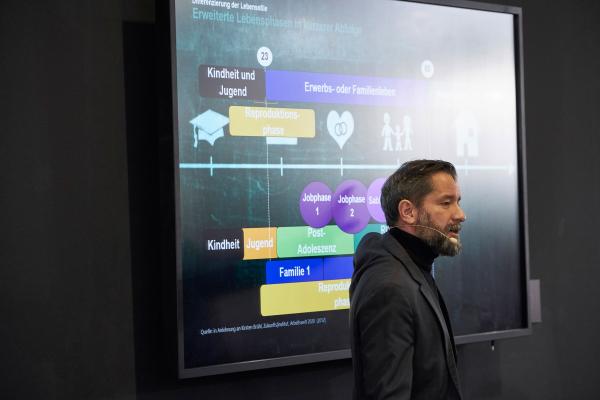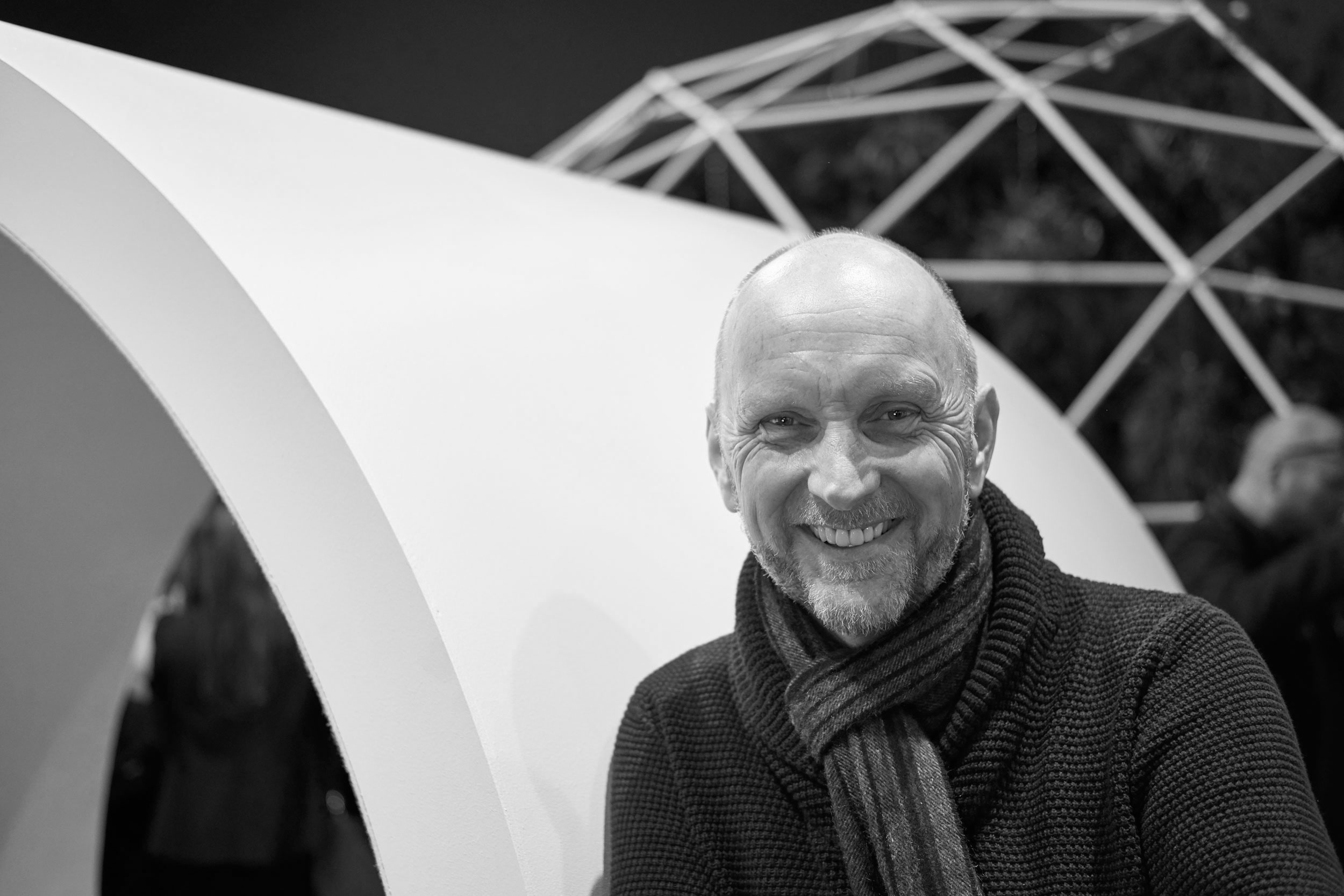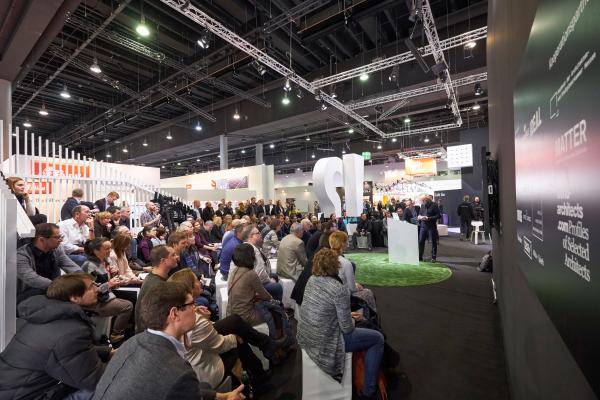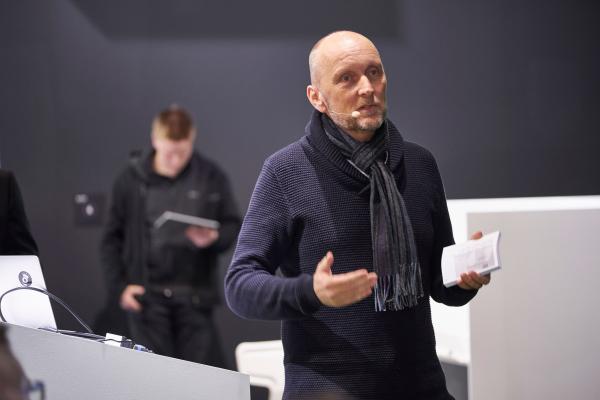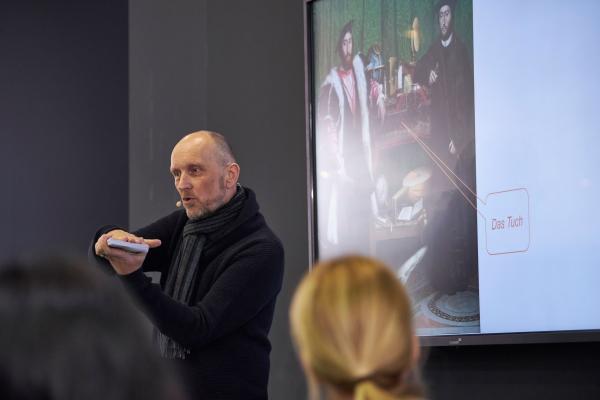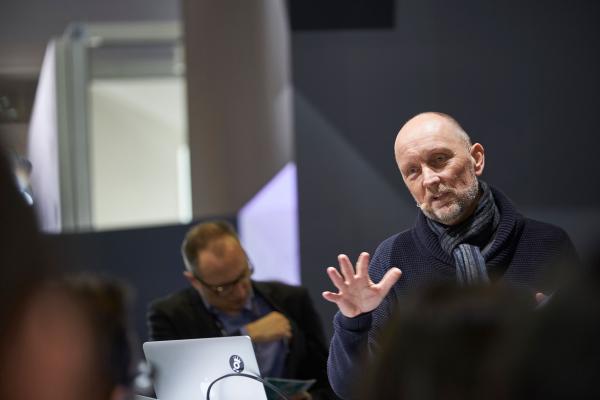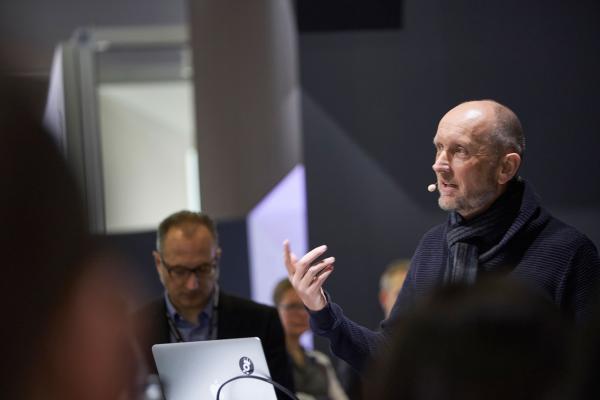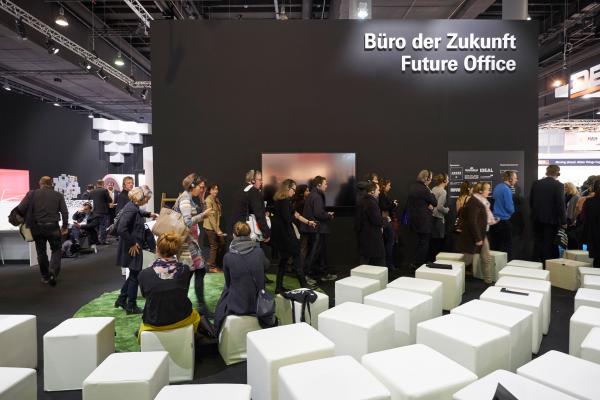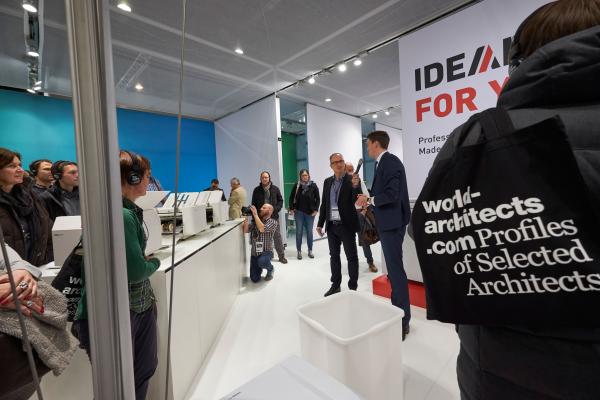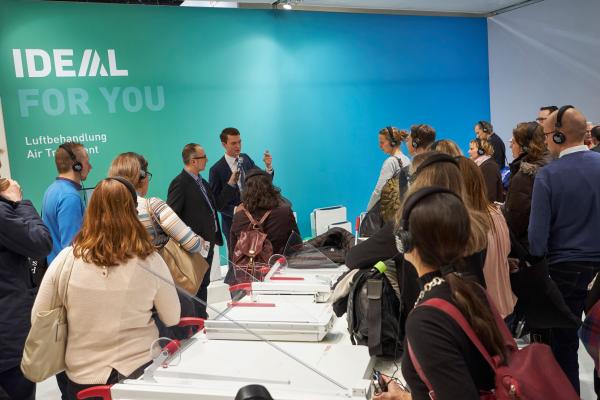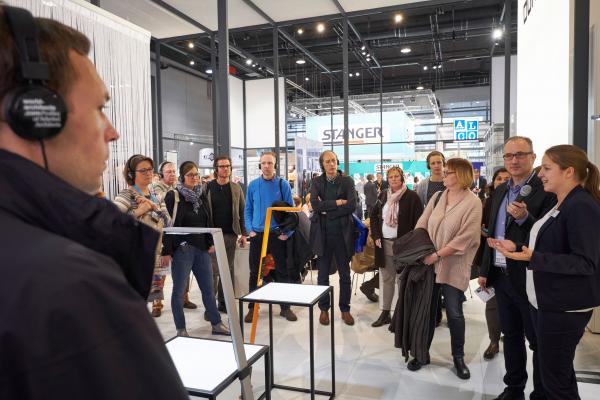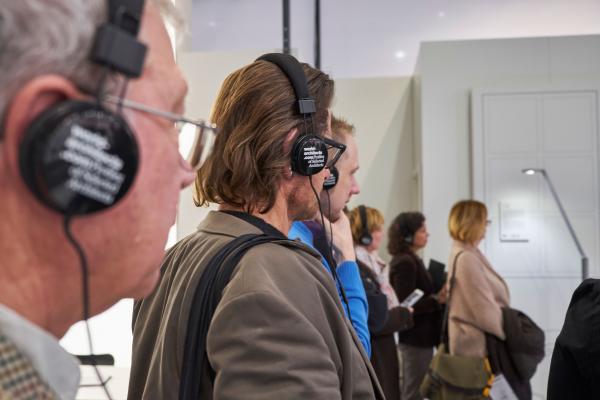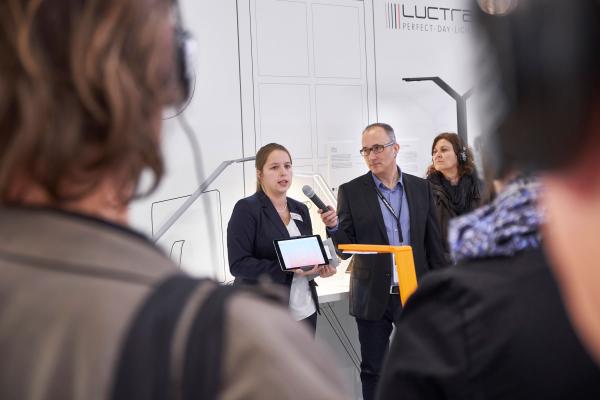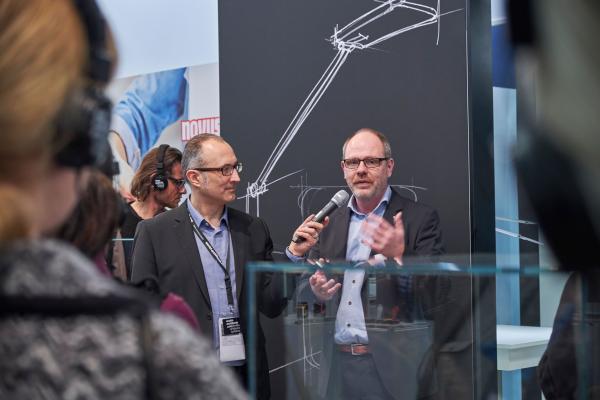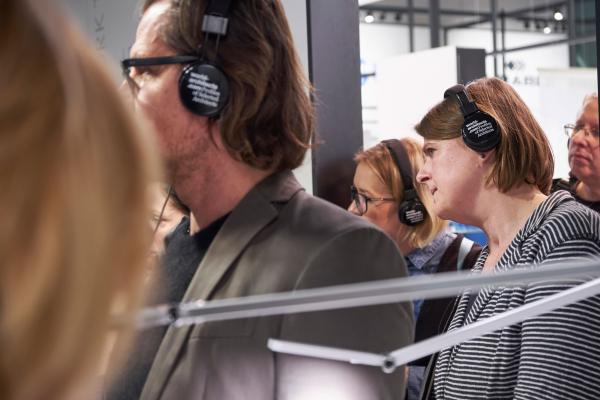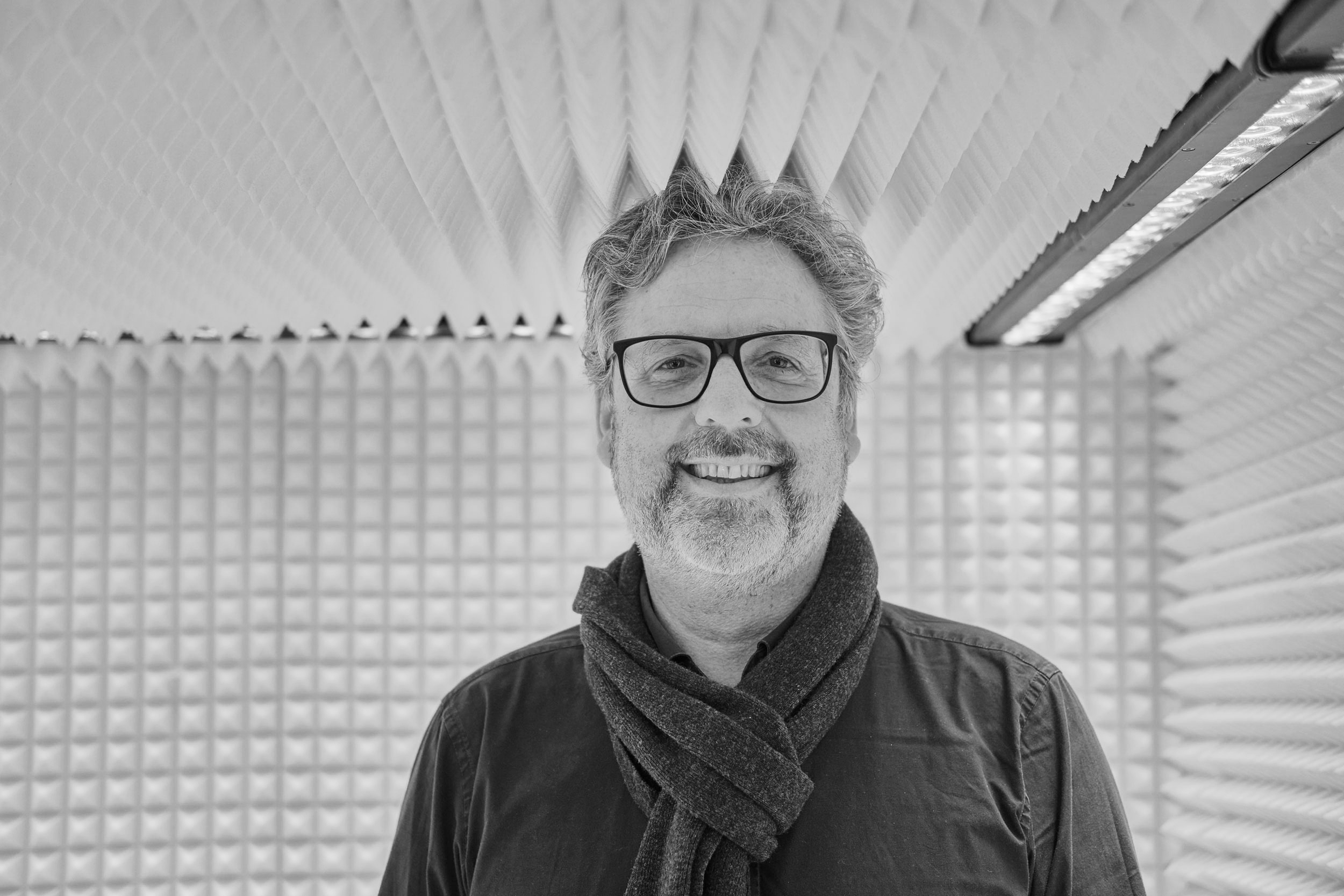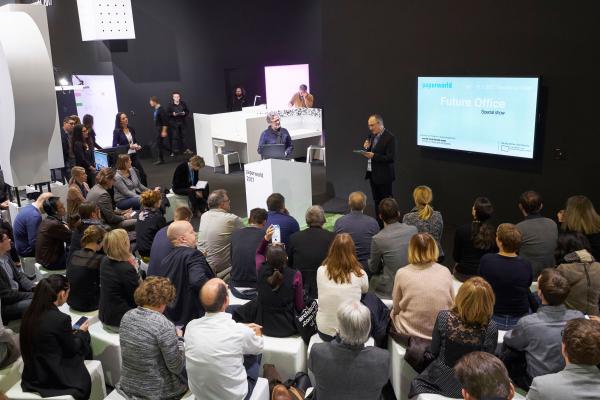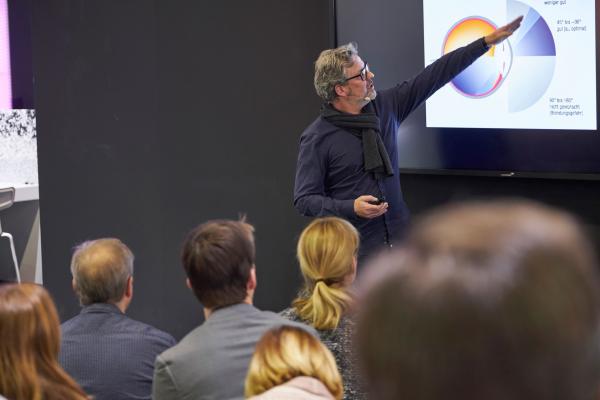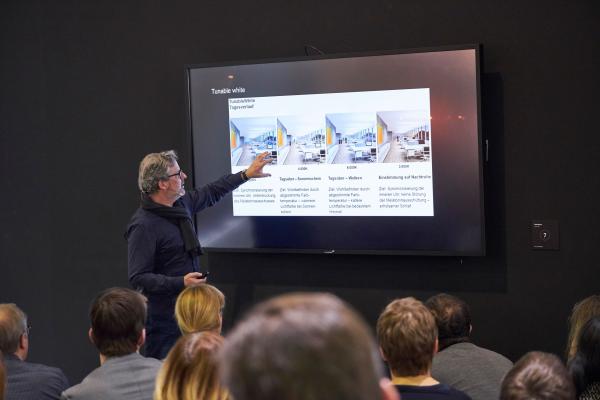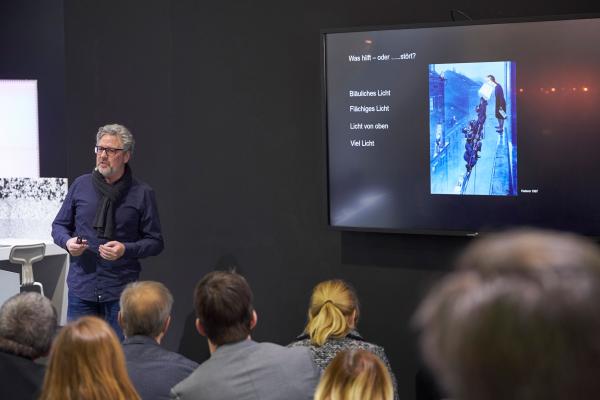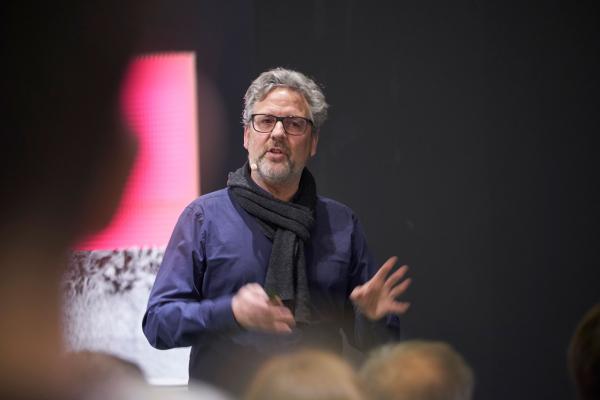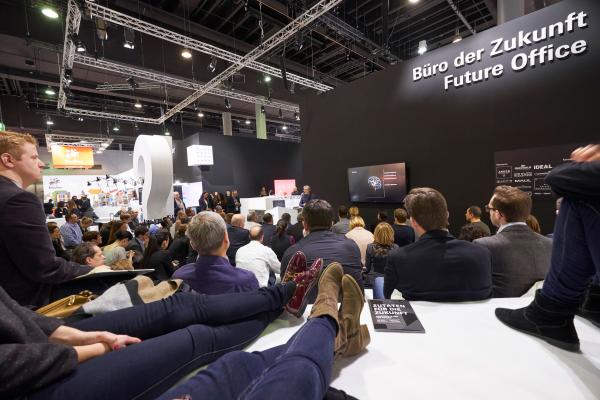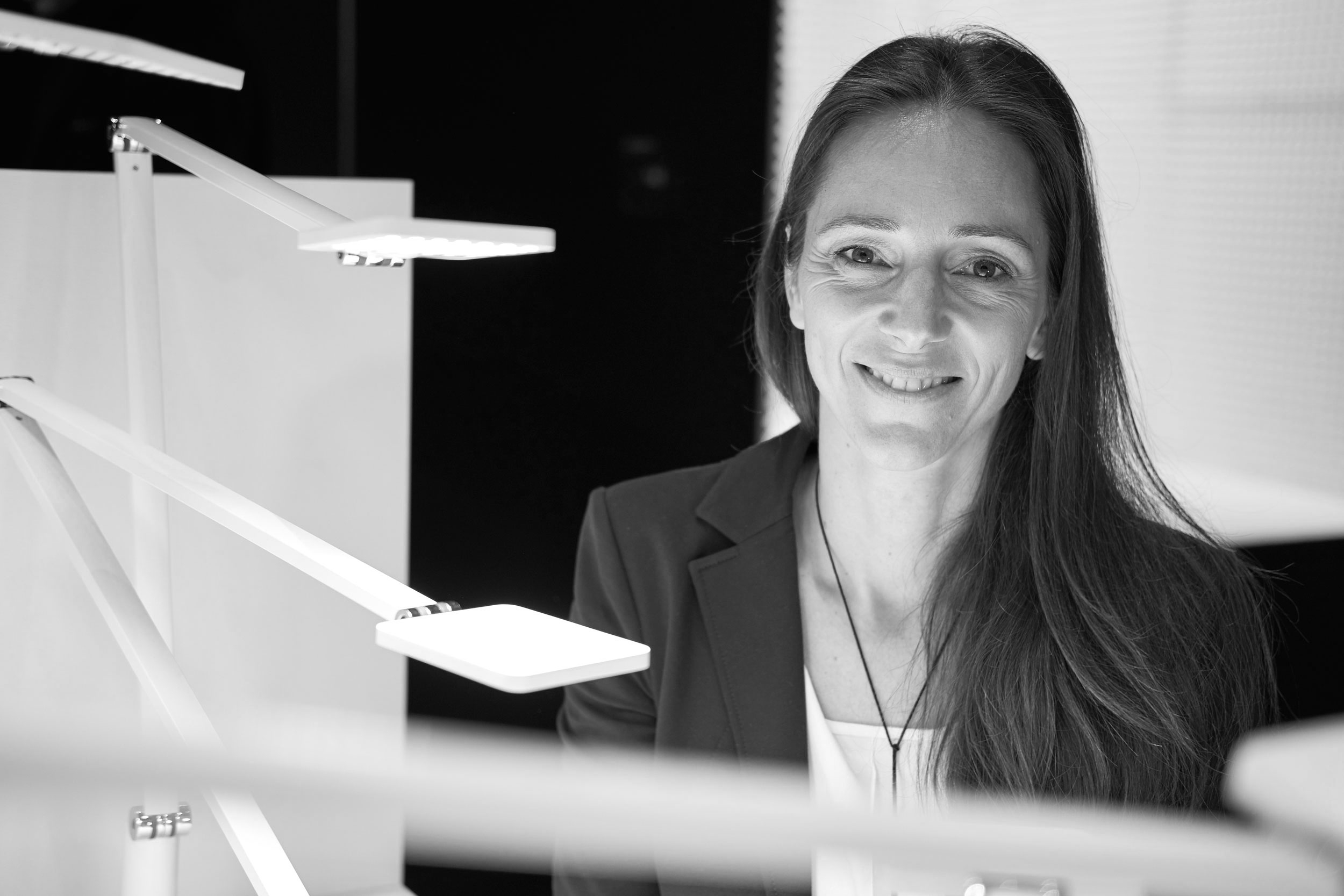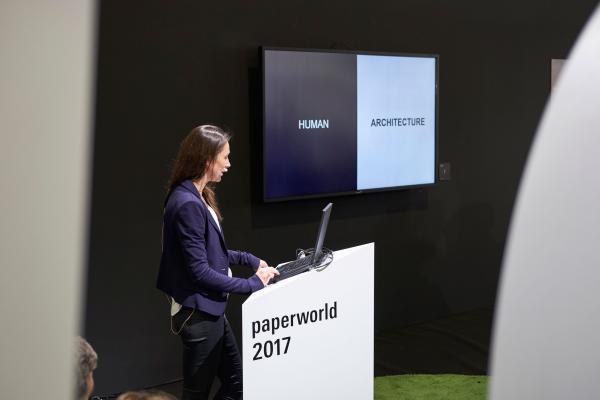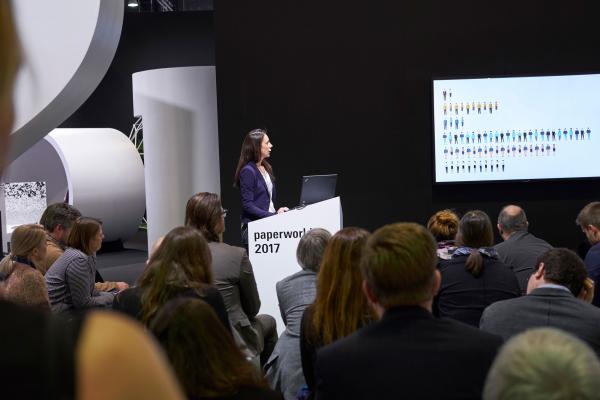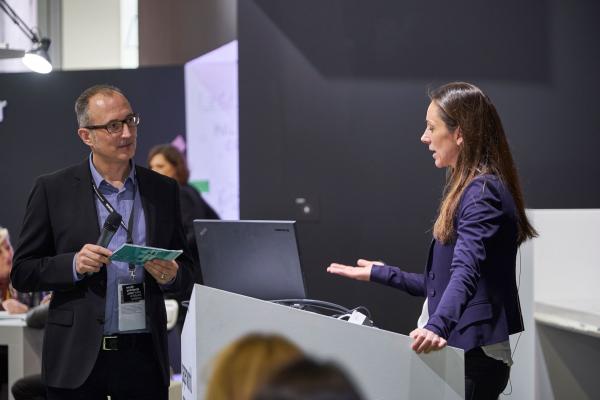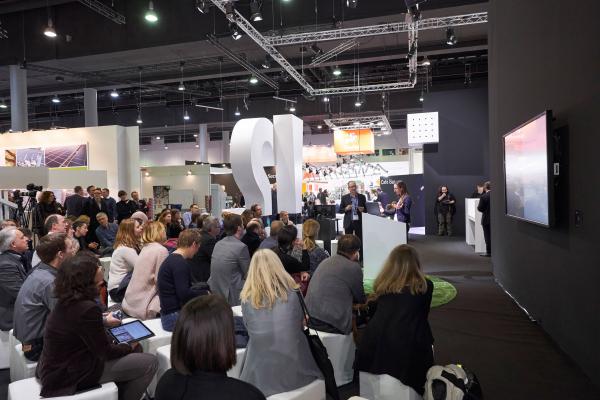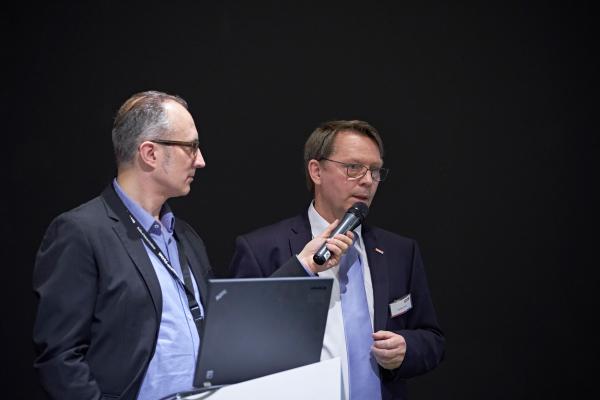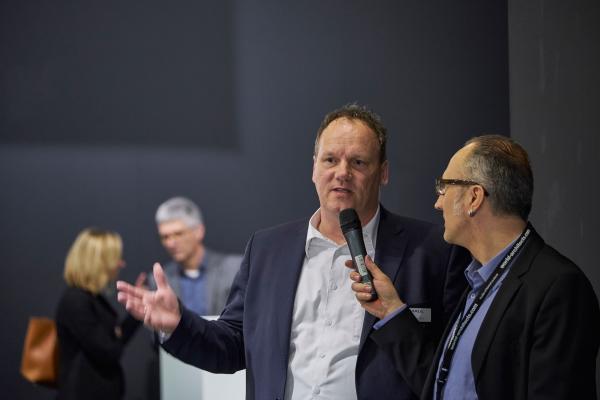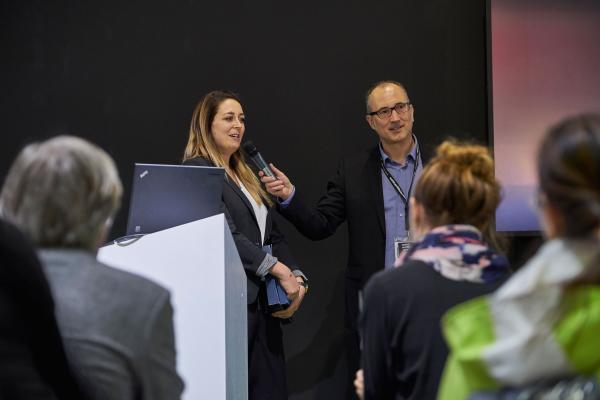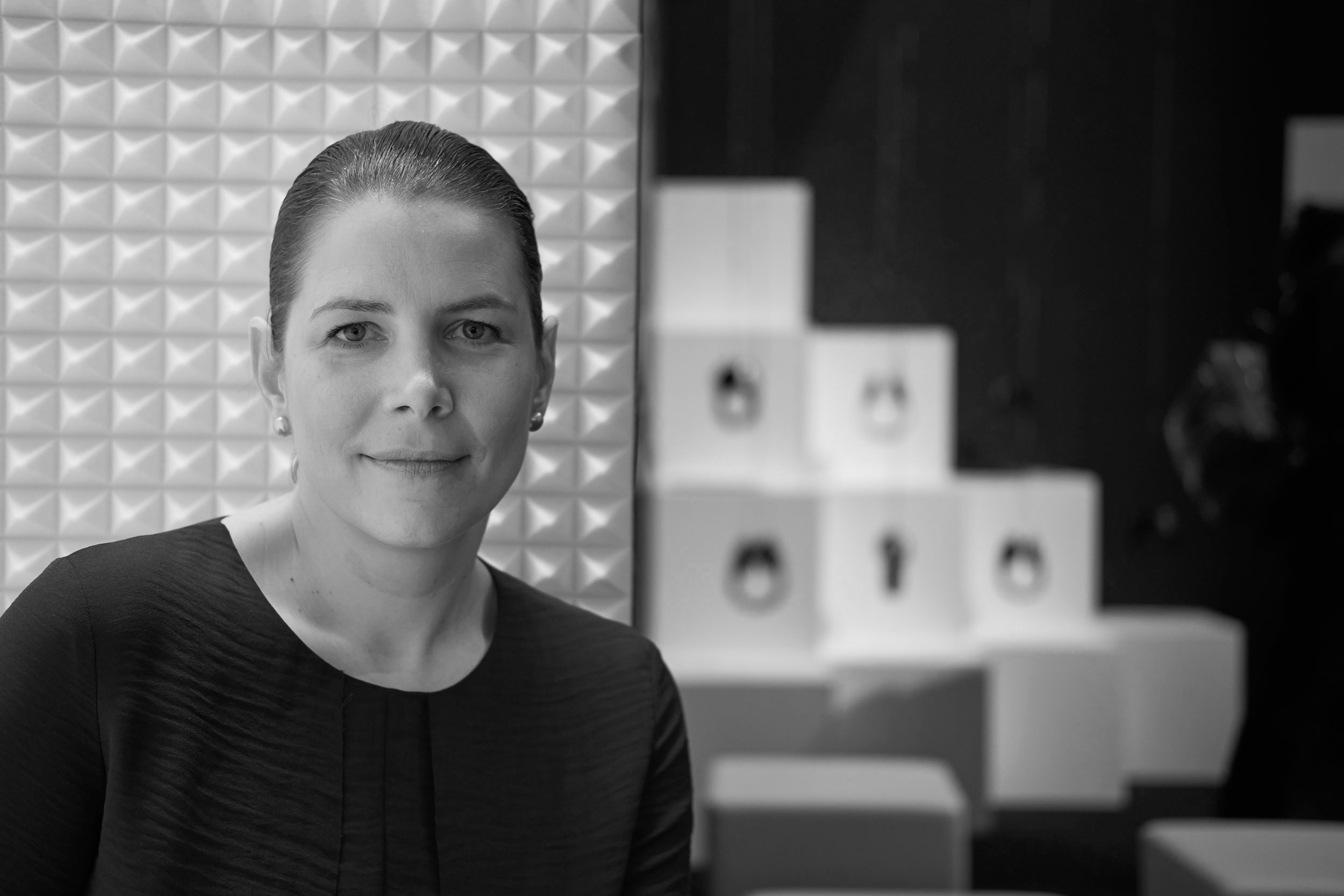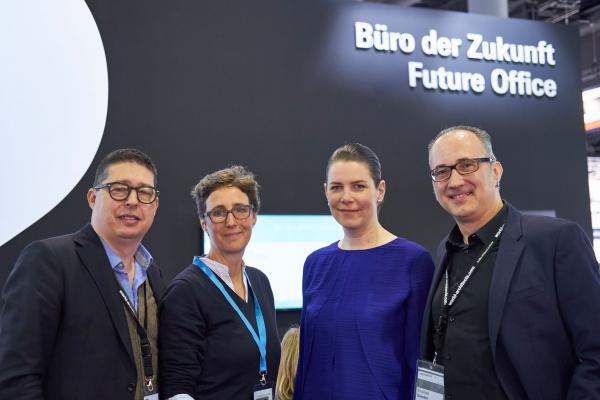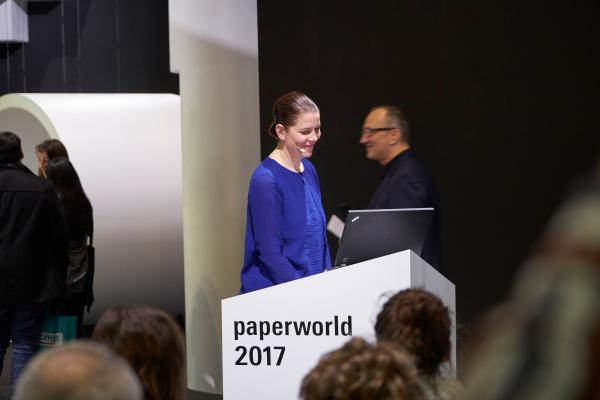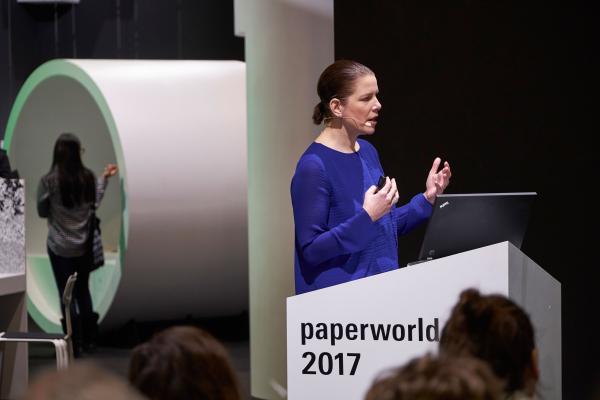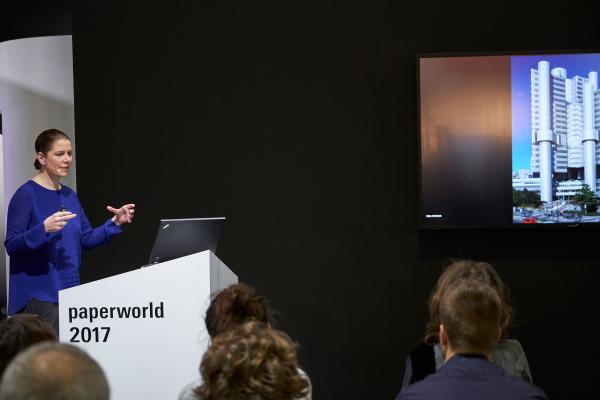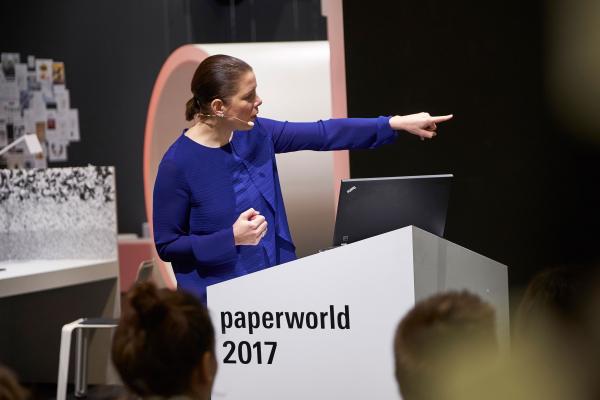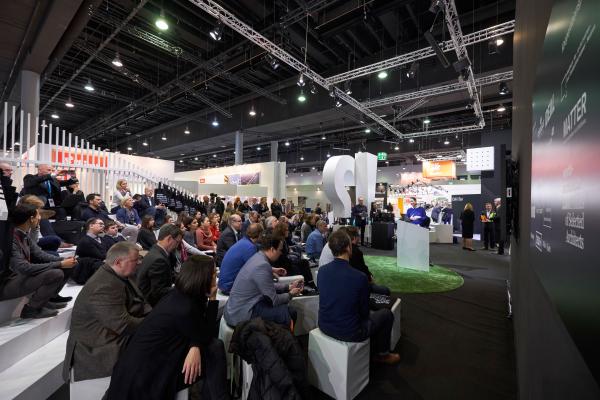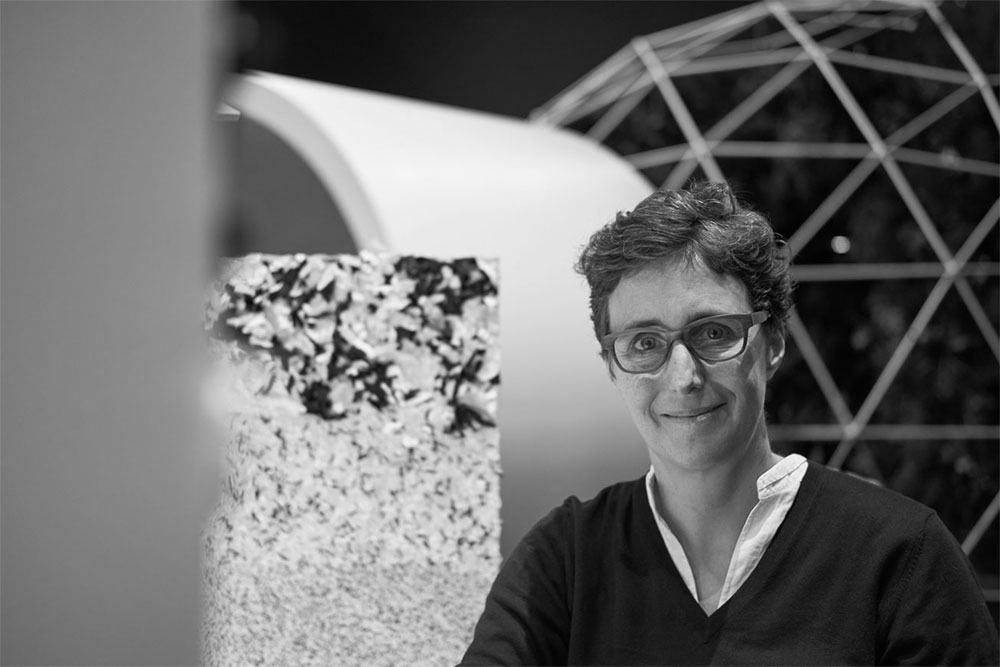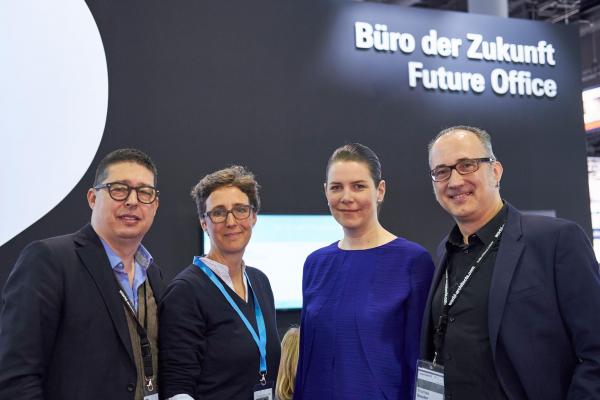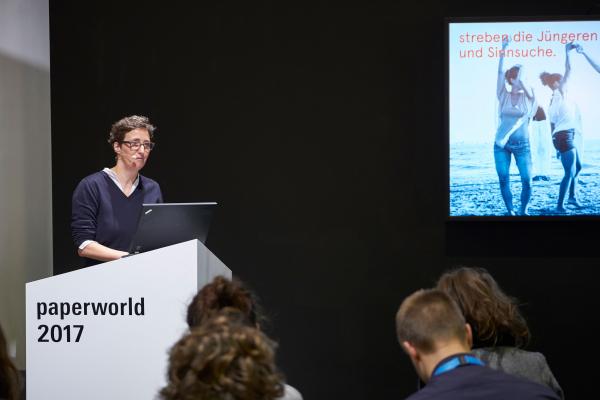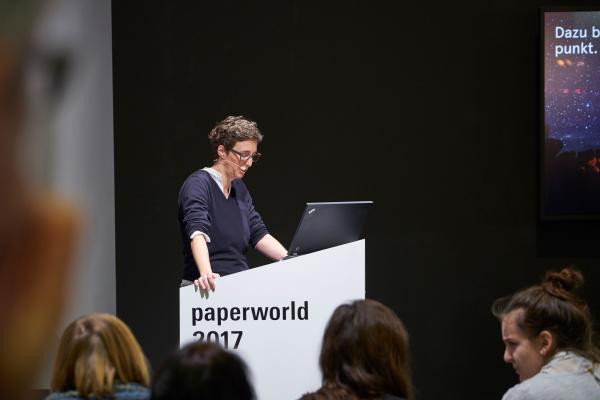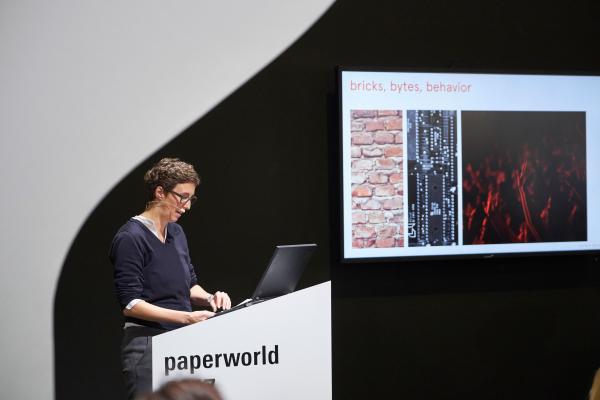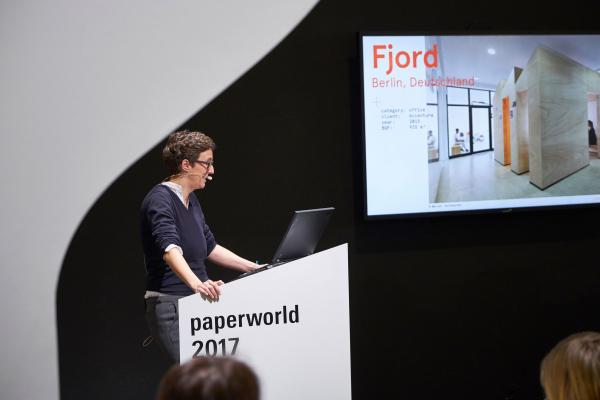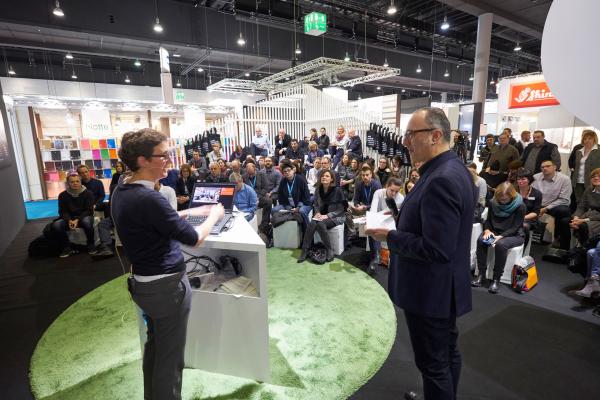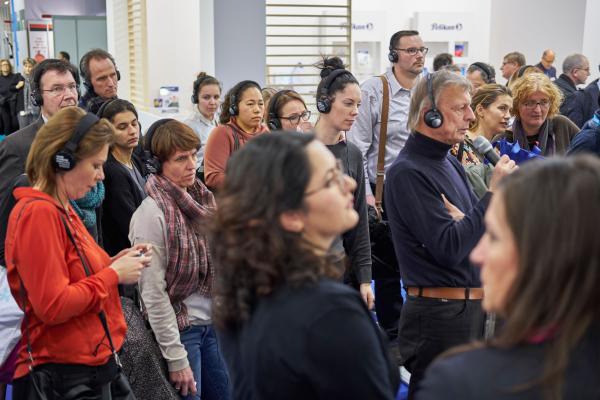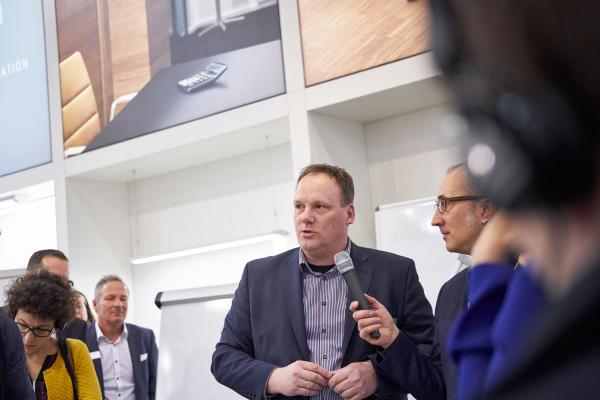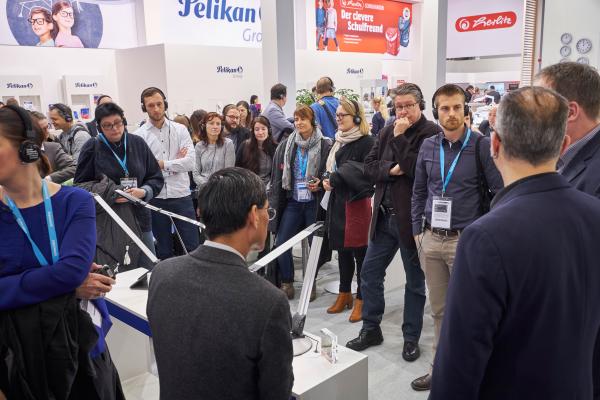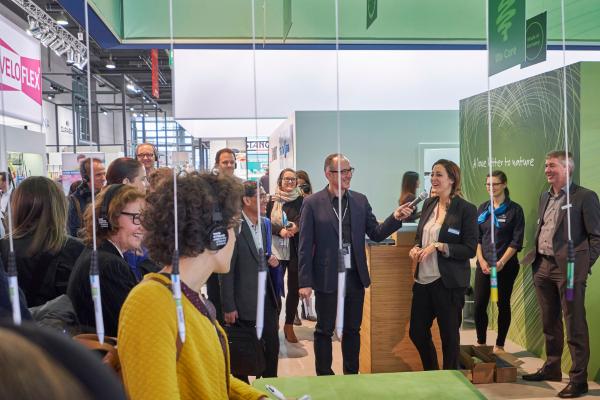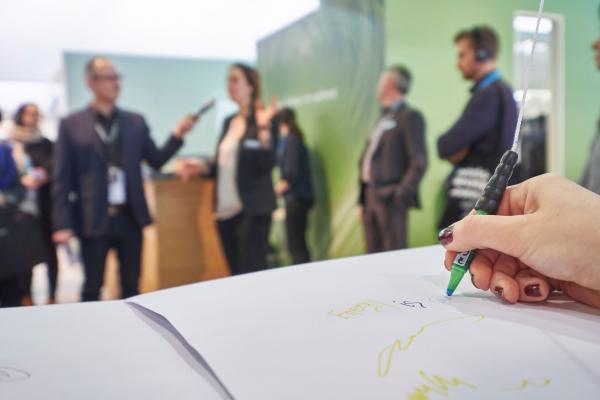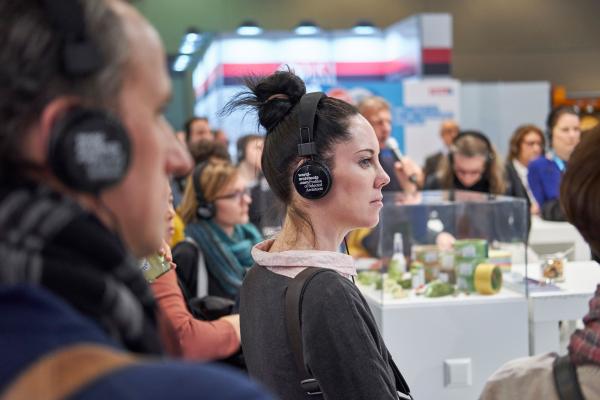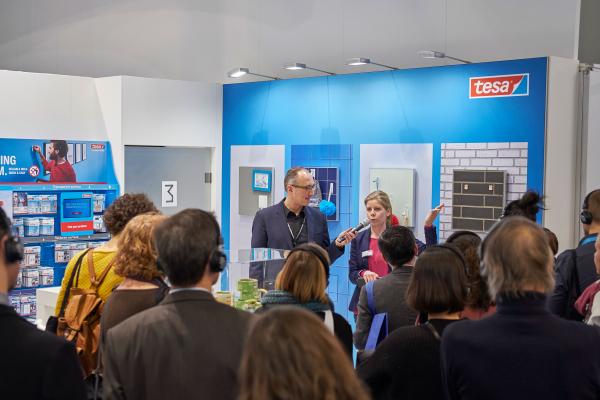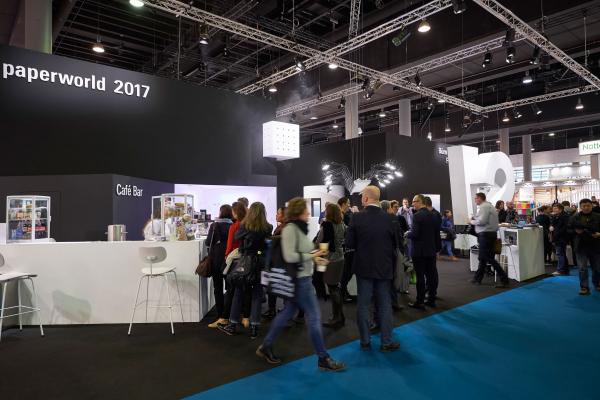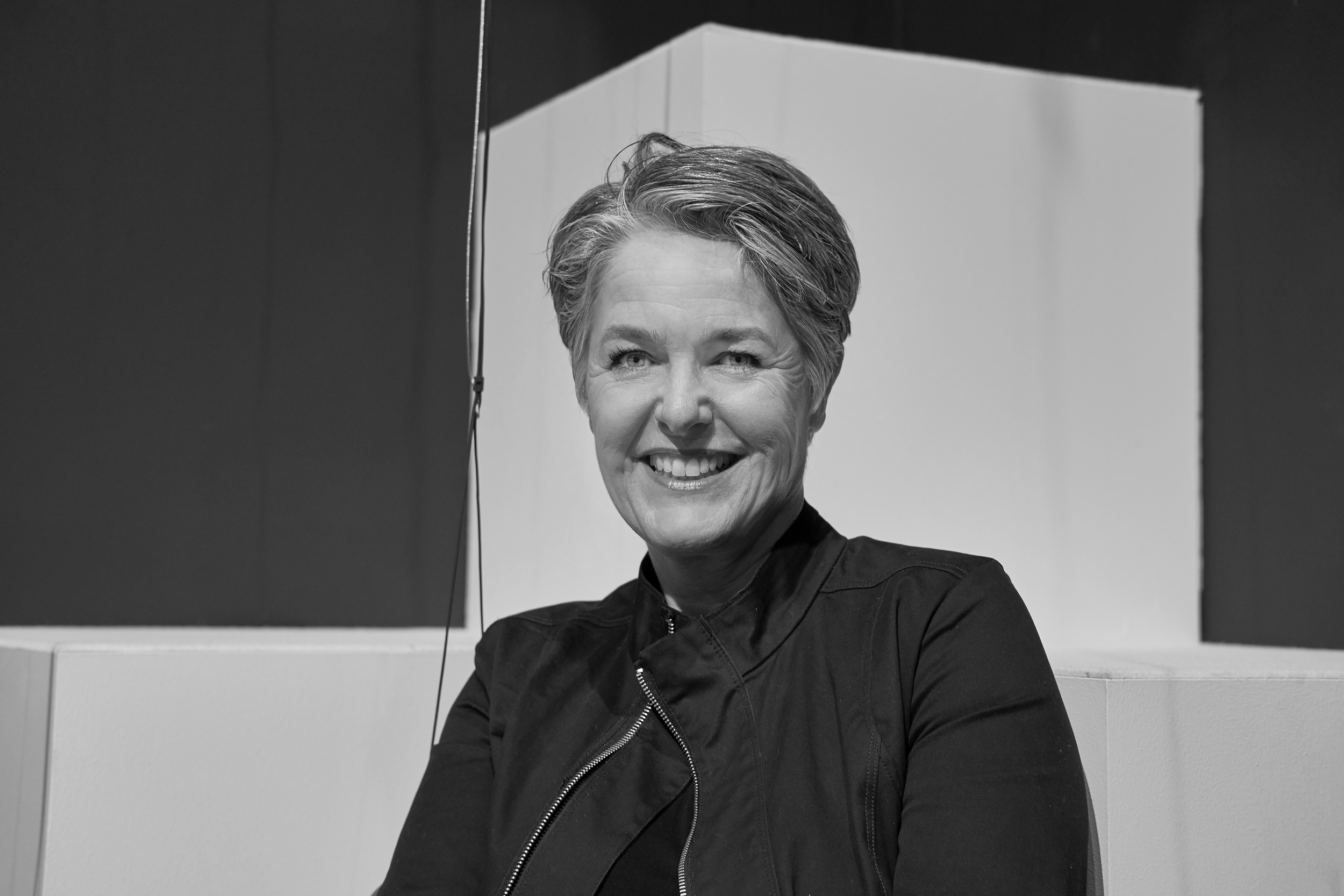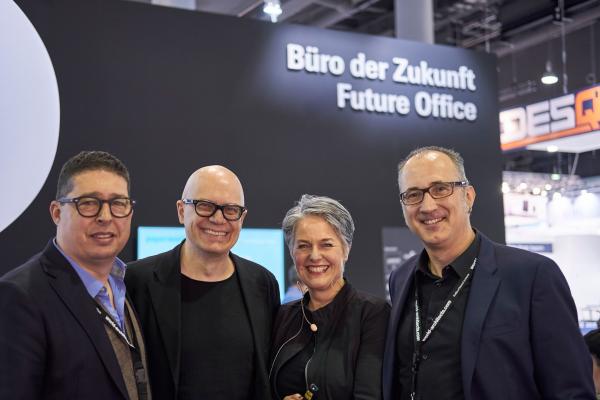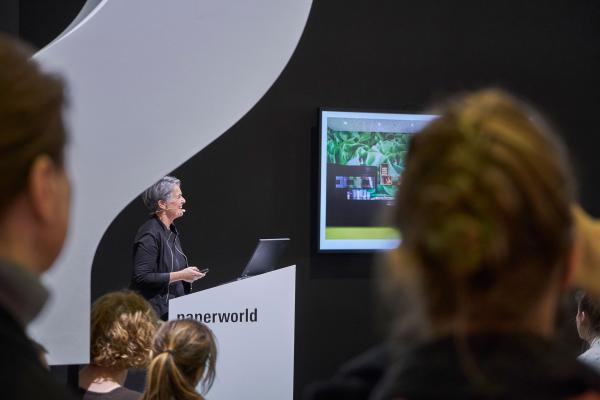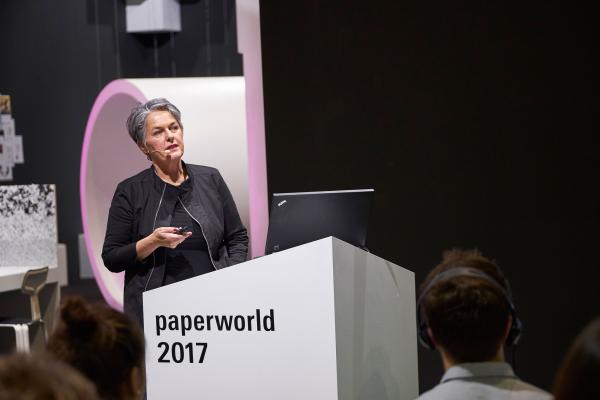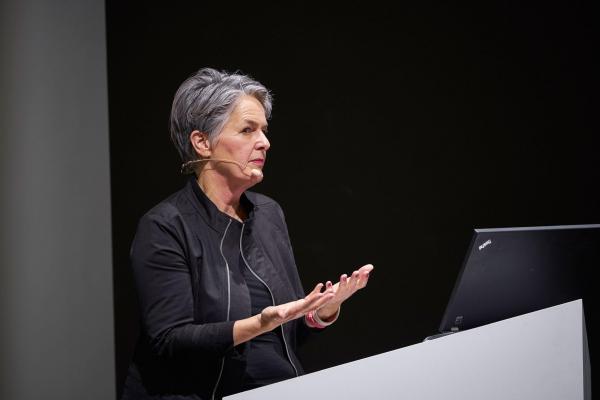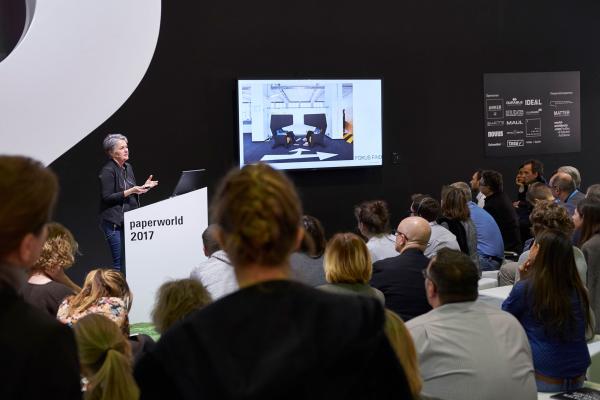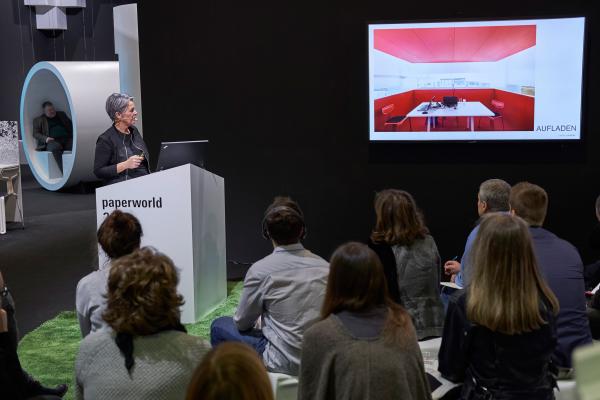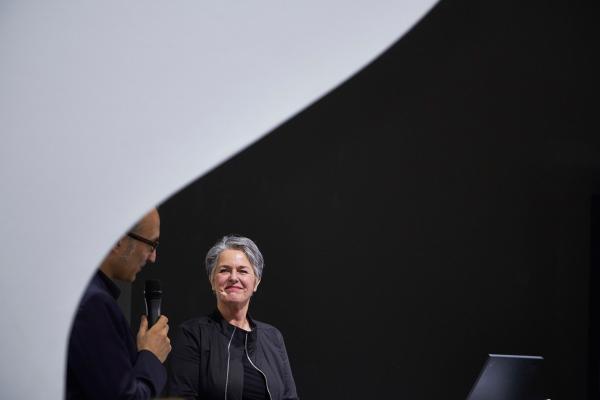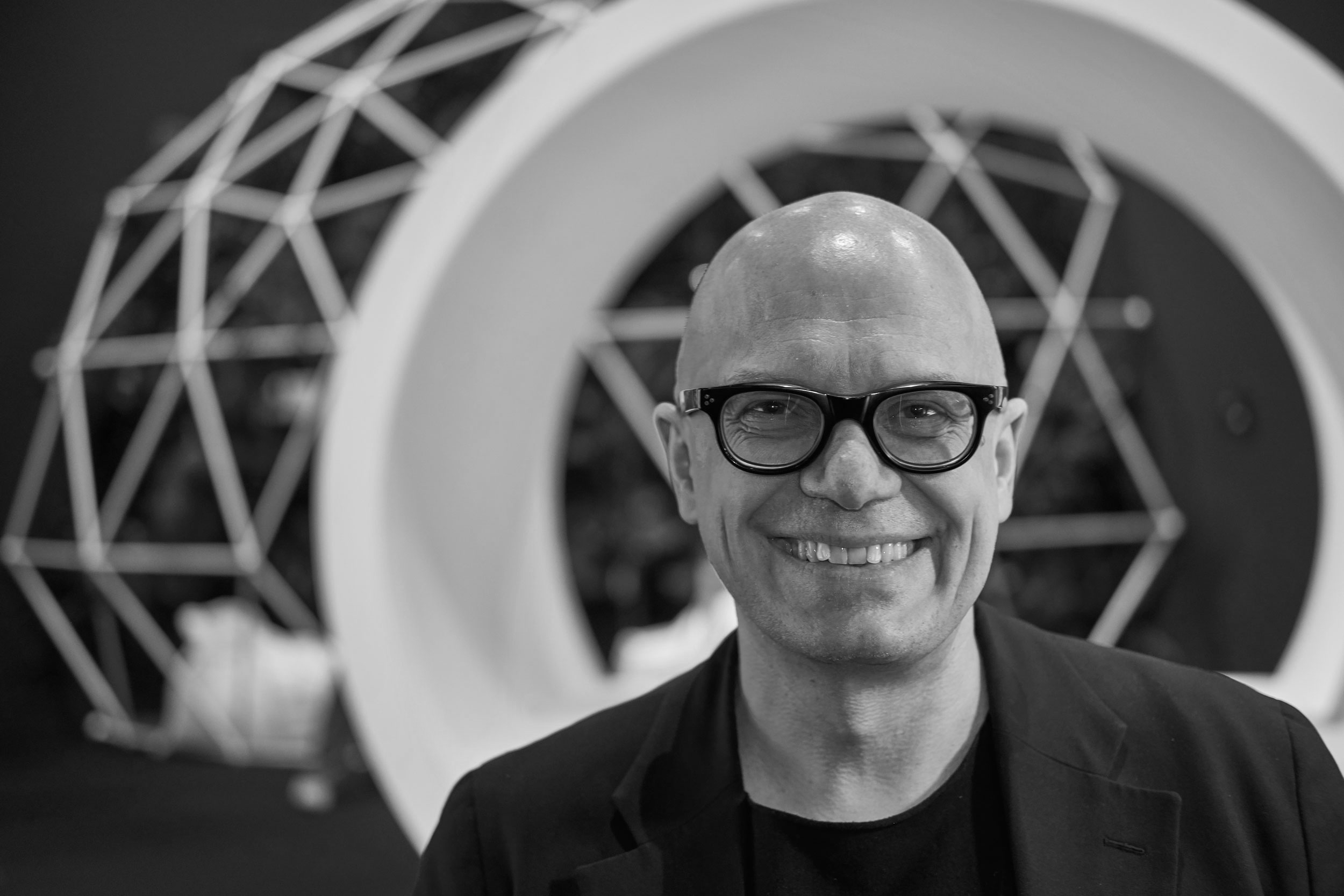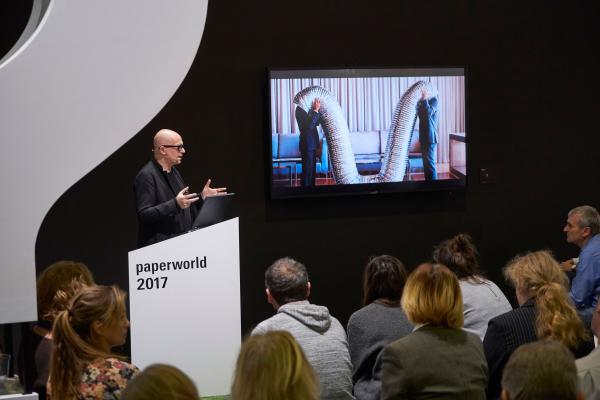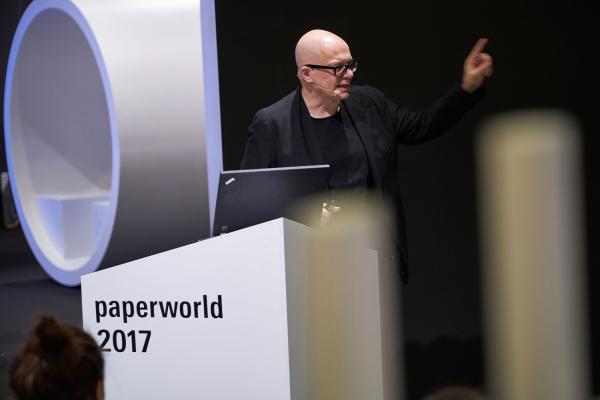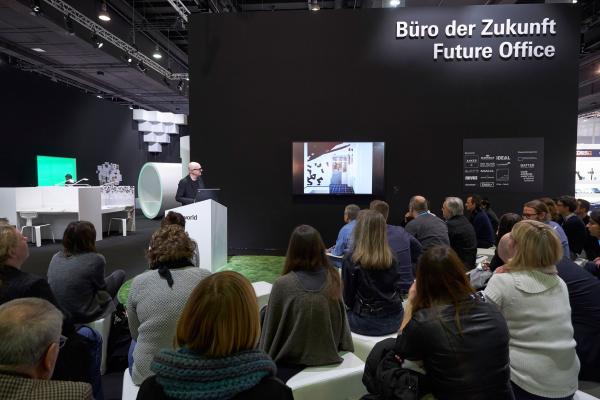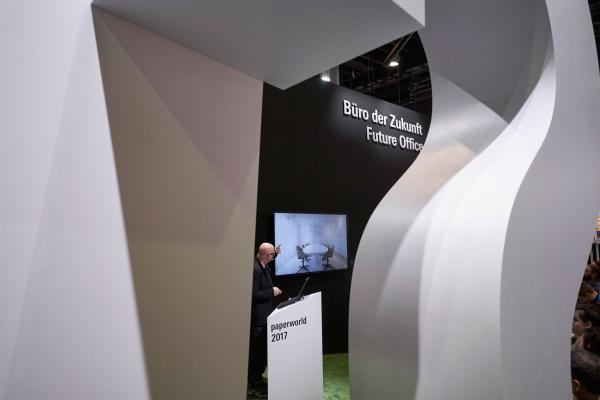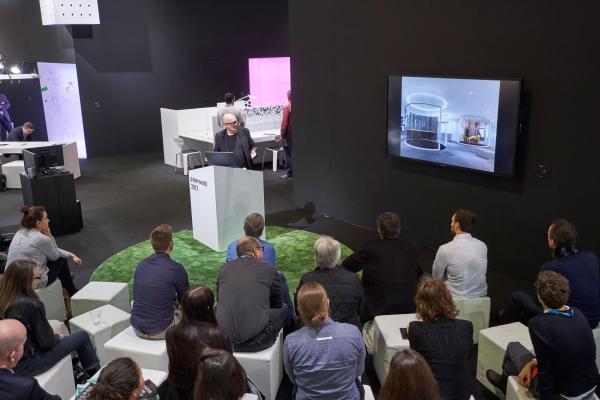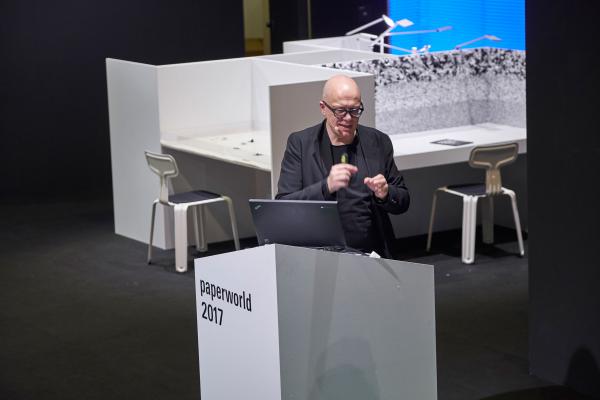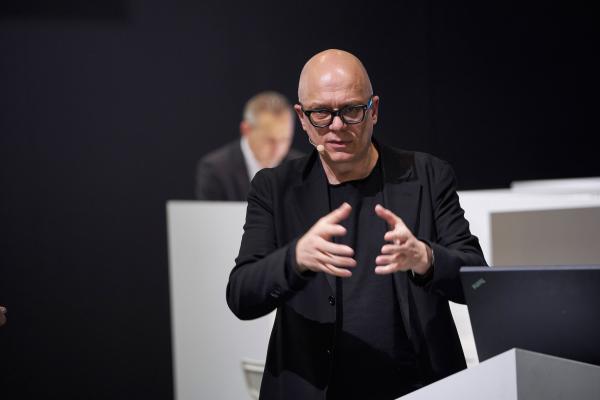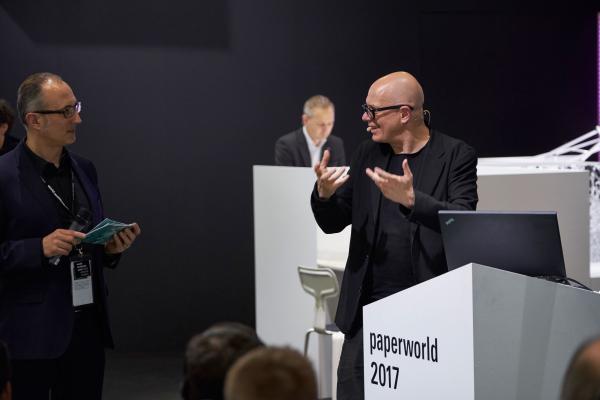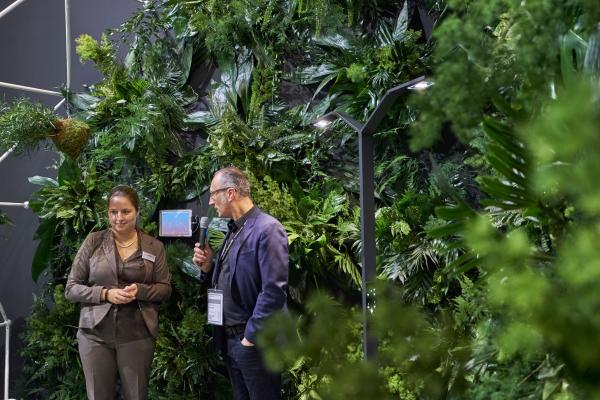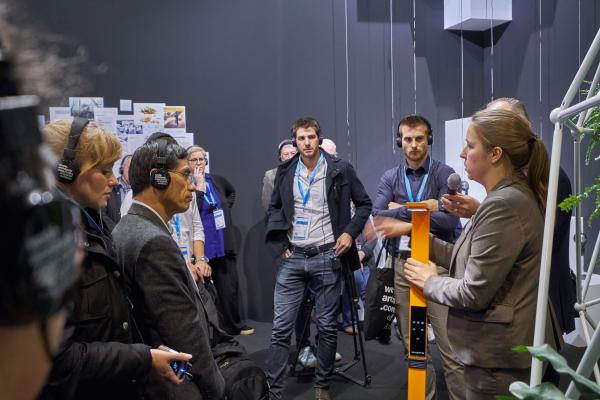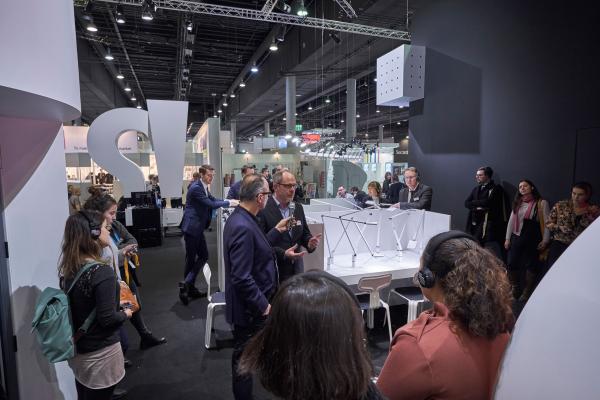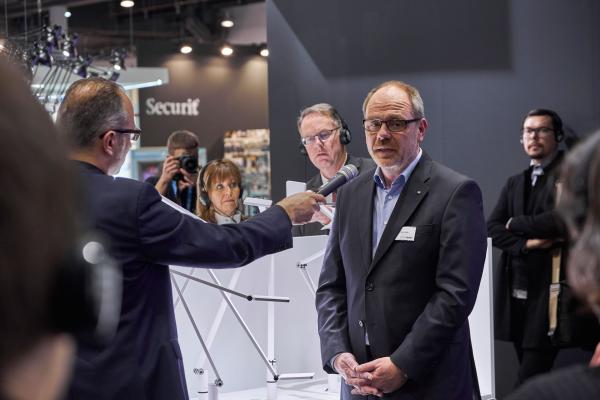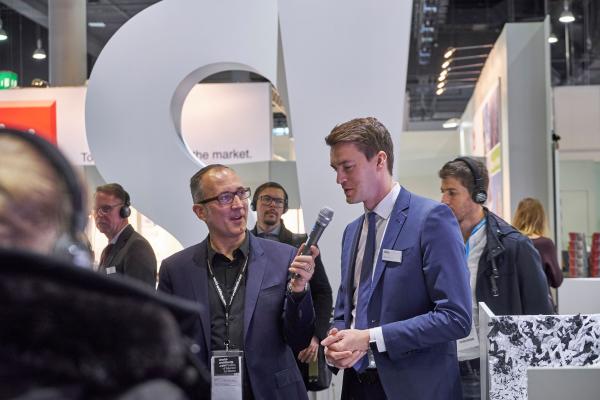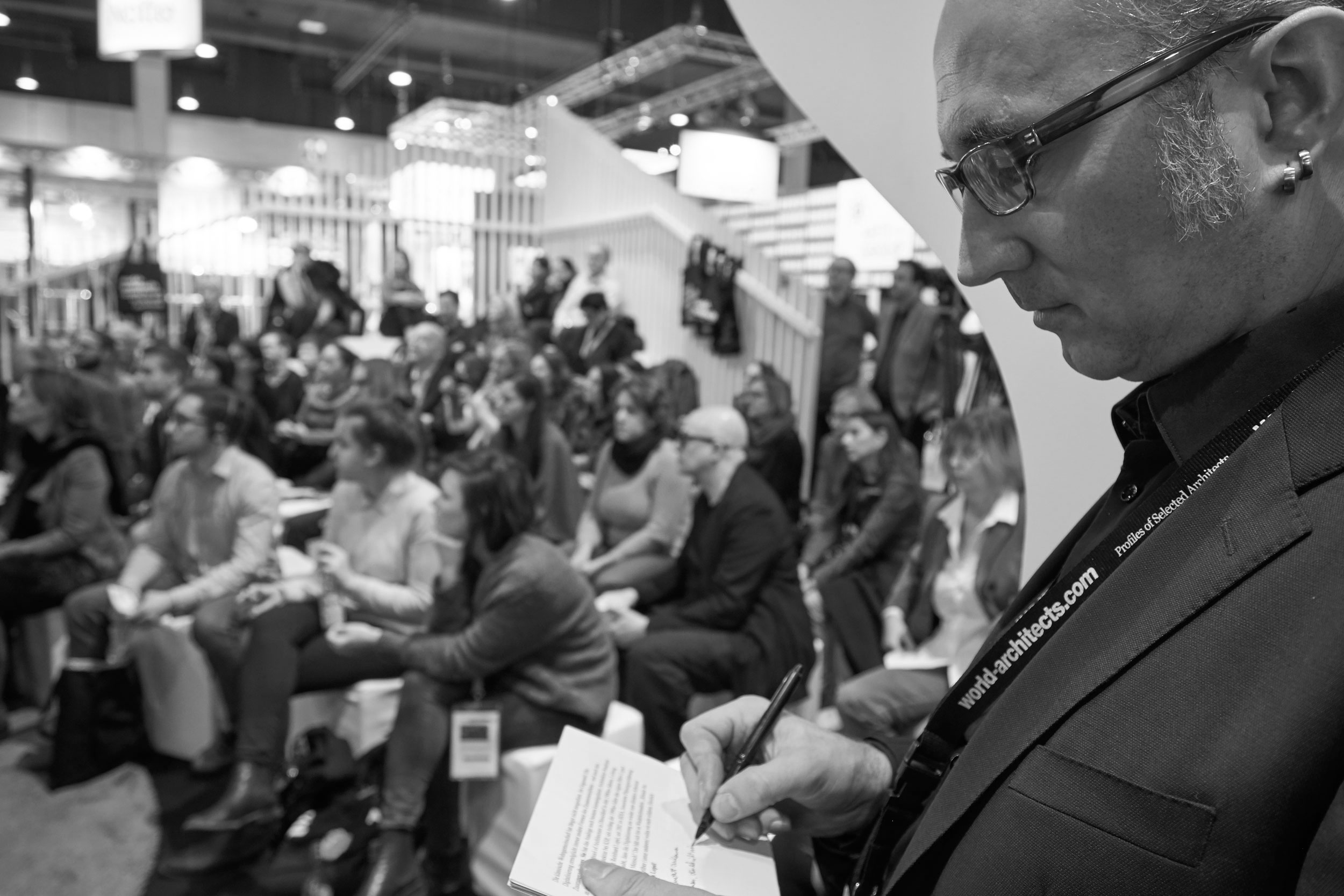Paperworld 2017 - Future Office - Impressions
30. Januar 2017 | Talks
- Vorträge Büro der Zukunft | Future Office Talks
- Ort: Sonderschau Halle 3.0 | C51
- 30.1.17 Montag 10:30 - 16:00 Uhr
- Vorträge in deutsch - Simultanübersetzung in englisch
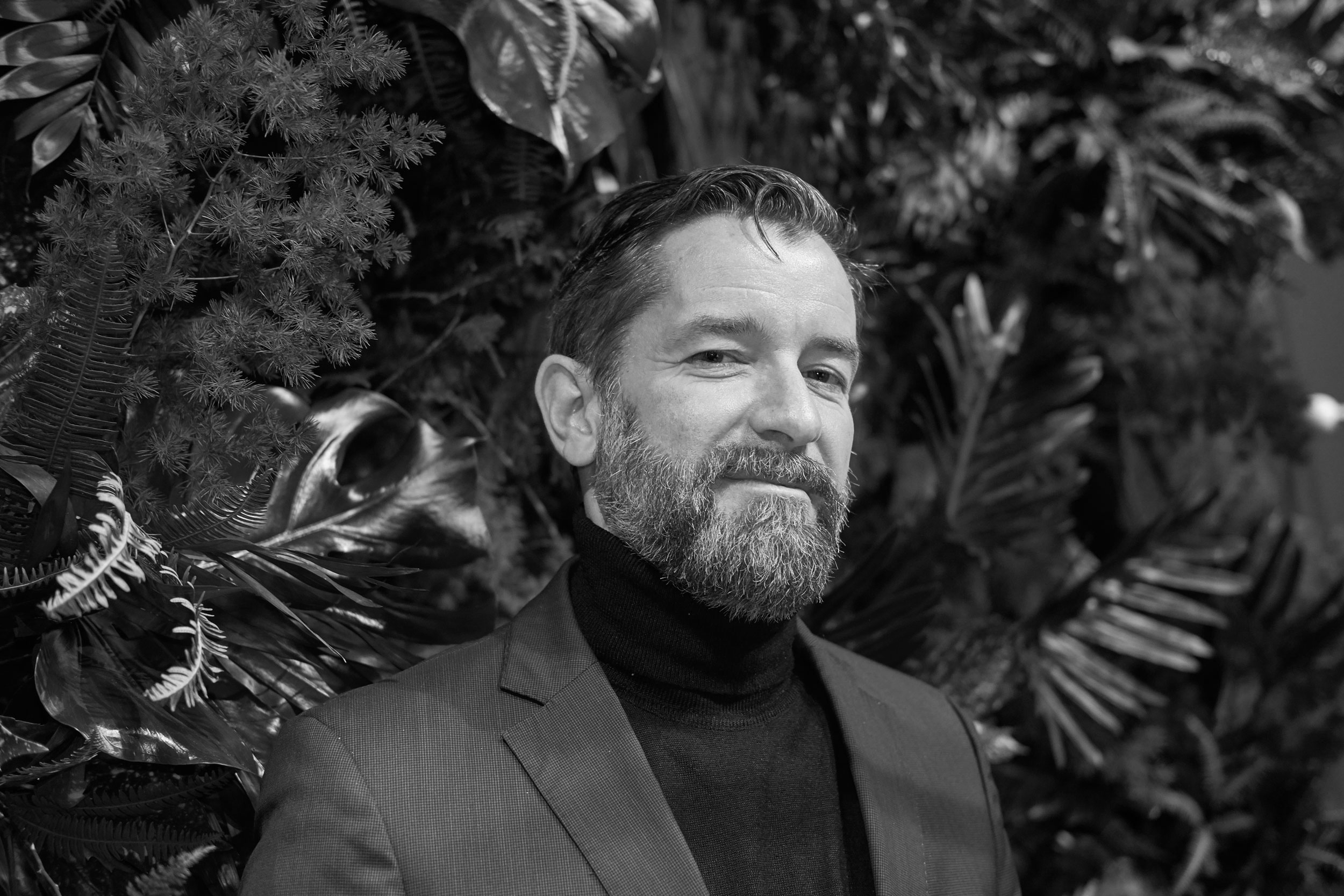 Dr. Alexander Rieck, Fraunhofer-Institut für Arbeitswirtschaft und Organisation IAO | LAVA , Stuttgart
Dr. Alexander Rieck, Fraunhofer-Institut für Arbeitswirtschaft und Organisation IAO | LAVA , Stuttgart
Dr. Alexander Rieck «Future Working Environments»
- Fraunhofer-Institut für Arbeitswirtschaft und Organisation, Stuttgart | www.iao.fraunhofer.de
- LAVA Laboratory for Visionary Architecture, Stuttgart, Berlin, Sydney | www.l-a-v-a.net
- 30. Januar, Montag 10:30 - 11:15 Uhr
„Die Welt der Arbeit ist im Wandel und erfordert kreative Lösungen. Unser Verständnis von Arbeit wird sich in den kommenden Jahren grundlegend verändern (müssen). Es sind nicht nur Fragen der umfassenden Technologie, sondern auch der Gesellschaft und damit der Frage, wie wir denn leben wollen.“ Alexander Rieck
Klaus de Winder «Zur DNA der Arbeitswelten»
- Fraunhofer-Institut für Arbeitswirtschaft und Organisation, Stuttgart | www.dewinder.de
- 30. Januar, Montag 11:15 - 12:00 Uhr
„Mit einem kurzen Exkurs durch die Arbeitswelten von gestern bis heute werden ihre Entwicklungsmerkmale ebenso unter die Lupe genommen wie wegweisende (Büro-) Räume vorgestellt, die den Versuch unternehmen, neuen Tendenzen zu entsprechen.“ Klaus de Winder
- Guided Tour Sonderschau «Büro der Zukunft» und ausgewählte Aussteller | Kaffeepause
- 30. Januar, Montag 12:00 - 13:00 Uhr
Wilfried Kramb «Licht·Leistung·Gesundheit»
- a·g Licht, Bonn | www.aglicht.de
- 30. Januar, Montag 13:00 - 13:45 Uhr
„Der Mensch verbringt heute ca. 80% des Tages in Gebäuden mit nur teilweise direktem und ausreichenden Zugang zum Tageslicht. Wird Kunstlichtbeleuchtung als ganzheitliches System verstanden, das Wohlbefinden und Leistung des Menschen positiv beeinflusst? Was kann die LED-Technologie bewirken?“ Wilfried Kramb
Réka Visnyei «Humans first»
- INpuls Interior / Design / Architecture, München | www.in-puls.com
- 30. Januar, Montag 13:45 - 14:30 Uhr
„In einer digital sich permanent wandelnden Welt arbeiten wir vernetzt, agil und kollaborativ an Projekten. Der Ort wird dabei oft sekundär, die Arbeitsumgebung aber umso wichtiger. Wir sprechen über das Corporate Office Design der McCann Worldgroup und inspirierenden Raum für mobiles und flexibles Arbeiten.“ Réka Visnyei
- Guided Tour Sonderschau «Büro der Zukunft» und ausgewählte Aussteller | Get Together
- 30. Januar, Montag 14:30 - 16:00 Uhr, Meeting Point: Halle 3.0 | C51
31. Januar 2017 | Talks
- Vorträge Büro der Zukunft | Future Office Talks
- Ort: Sonderschau Halle 3.0 | C51
- Dienstag 31.1.17 10:30 - 16:00 Uhr
- Vorträge in deutsch - Simultanübersetzung in englisch
Katrin Jacobs «Zukunftsorientierte Wandlung»
- HENN, München | www.henn.com
- 31. Januar, Dienstag 10:30 - 11:15 Uhr
„Der denkmalgeschützte HVB-Tower, ein Wahrzeichen Münchens, wurde von HENN zu einem klimaeffizienten Green Building umgebaut. Ein Blick hinter die raffinierte neue Fassade, deren nach wie vor futuristischer Charakter bis in Detail erhalten blieb, präsentiert ein zukunftsweisendes Bürokonzept.“ Katrin Jacobs
Vanessa Riecke «Neue Heimat: Büro.»
- Kinzo, Berlin | www.kinzo-berlin.de
- 31. Januar, Dienstag 11:15 - 12:00 Uhr
„Individuelle Set-Ups ersetzen die Platzhalterbüros von gestern. Das Büro der Zukunft ist Familie und Freundeskreis, Dorf und Stadt, Gemeinschaft und inszenierter Treffpunkt. Gestaltet für den Mitarbeiter und nicht für den Kunden, originell und authentisch. Welcome, Office, Sweet Office!“ Vanessa Riecke
- Guided Tour Sonderschau «Büro der Zukunft» und ausgewählte Aussteller | Kaffeepause
- 31. Januar, Dienstag 12:00 - 13:00 Uhr
Monika Lepel «Frohes Schaffen! Rituale für digitale Nomaden»
- Lepel & Lepel, Köln | www.lepel-lepel.de
- 31. Januar, Dienstag 13:00 - 13:45 Uhr
„Wo findet die Zukunft ihren Arbeitsplatz – auf loungigen Kuschelsofas oder in groben Werkstätten? Zwischen Wohnzimmer und Lagerhalle scheint alles möglich. Je größer die Auswahl, umso ausgeprägter das Bedürfnis nach Ritualen. Was Wohngemeinschaften und Büro-Teams gemeinsam haben.“ Monika Lepel
Peter Ippolito «Identity is the new Facility»
- Ippolito Fleitz Group, Stuttgart | www.ifgroup.org
- 31. Januar, Dienstag 13:45 - 14:30 Uhr
„Unsere Welt ist zunehmend durch digitale Erfahrungen geprägt, Arbeitsprozesse verändern sich rasant und auch der Arbeitsplatz verändert sich. In einer Welt, die sich permanent wandelt, ist Kommunikation die einzige Konstante. Kommunikation ist alles. Alles ist Kommunikation. Damit wandelt sich auch der Arbeitsort.“ Peter Ippolito
- Guided Tour Sonderschau «Büro der Zukunft» und ausgewählte Aussteller | Get Together
- 31. Januar, Dienstag 14:30 - 16:00 Uhr
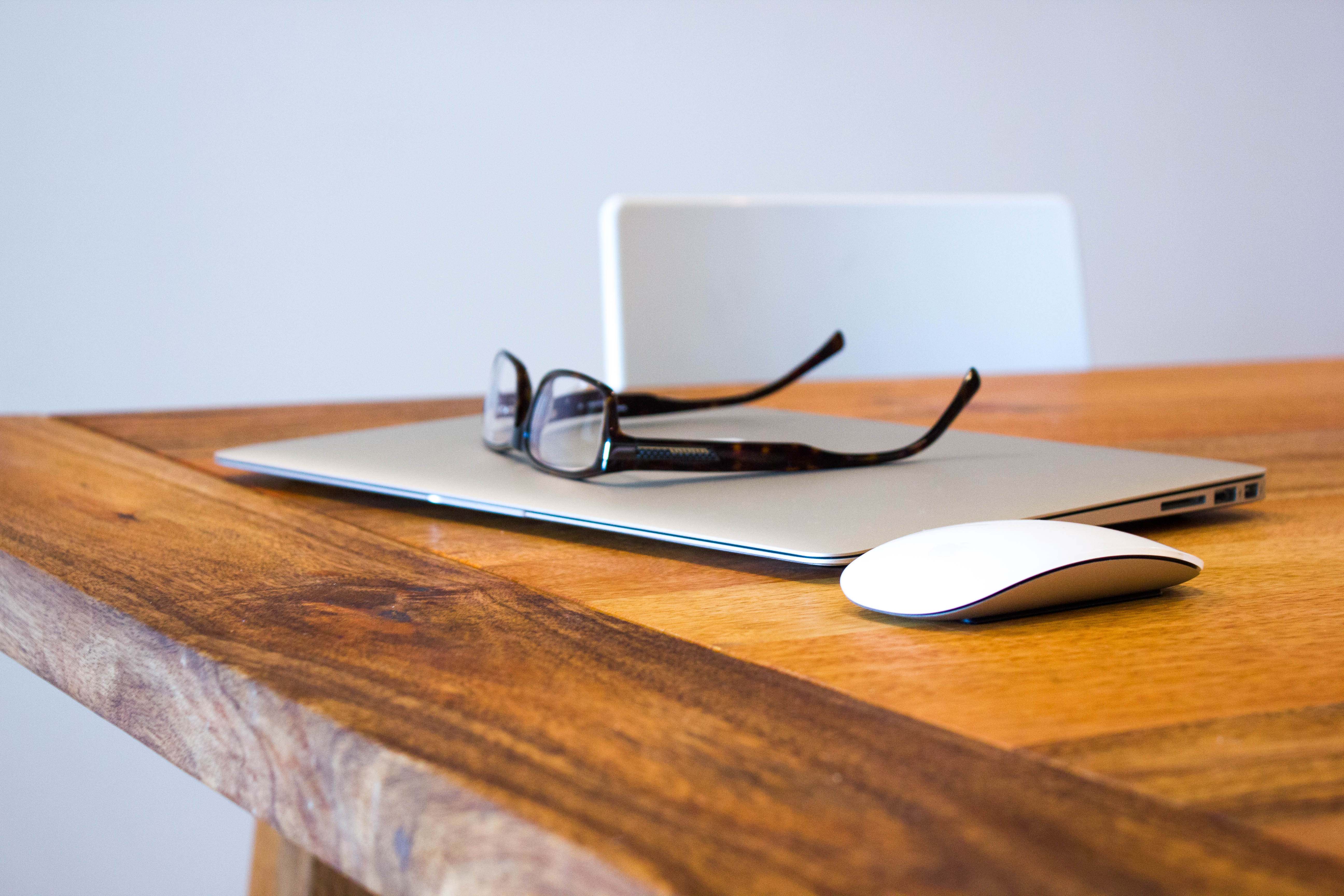
Since the construction of the Uffizi in Florence in the 16th century, which went down in the history of architecture as the first office complex, a lot has happened in the design of workspaces, mostly driven by the change of the world of work. Especially the second half of the last century brought with it important changes, not least because work increasingly shifted from agriculture and industrial production towards the service sector at that time. Today, this process is still continuing, primarily fuelled by the digital revolution, which – one shouldn’t forget – is only about 20 years young. Digital working has enormously accelerated the evolution of the working world into an economy where knowledge and ideas are regarded as central resource and which is less about physical than about cognitive abilities. The human being is still an important factor in the company, however, the attention is increasingly focussing on the individual who is not that easy to replace. In order that the employee is as efficient as possible he should feel comfortable. This is best achieved if the workplace is tailored to one’s individual needs.
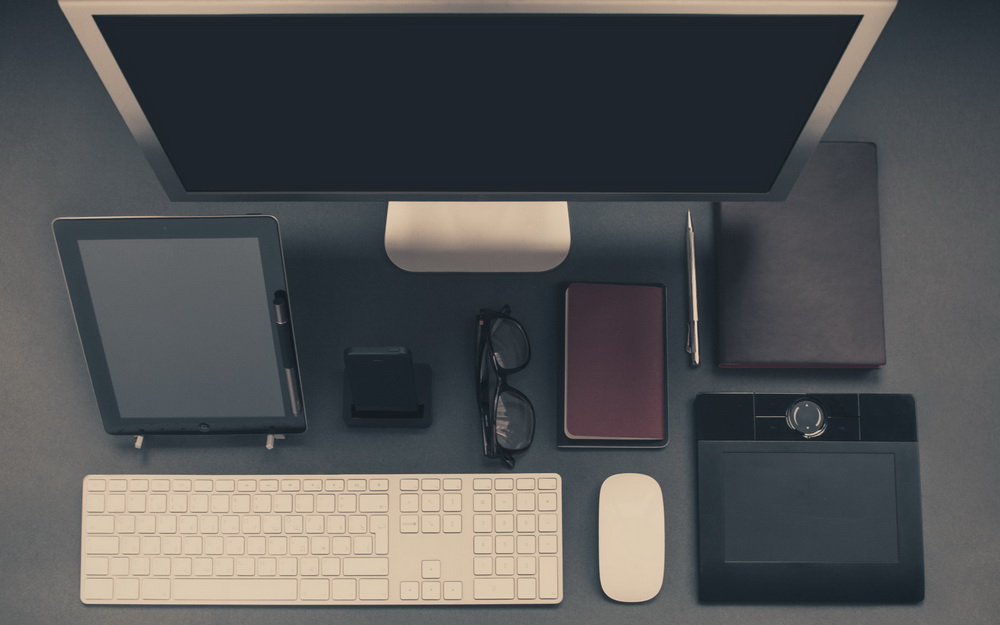
What do the employees think about that? A study conducted in the forefront of Paperworld 2017 deals with the question of how office employees need to work. «Working Spaces 2025» shows that 61 percent of the interviewed German office employees wish to have more flexible structures and a stronger say in the selection and the design of the workplace. Spatial dynamics and a balanced interplay of zones with different characteristics are in demand. According to this, at least three different areas are envisaged for the contemporary office: the communication zone for exchange and knowledge transfer, the concentration area as a refuge and the inspiration zone for relaxation or stimulus for new ideas. Even though the separation between work and leisure tends to be blurred in such office situations, idleness shall definitely not be encouraged. In fact, the idea behind this is that an attractive architectural environment helps to increase the pleasure people take in their work.
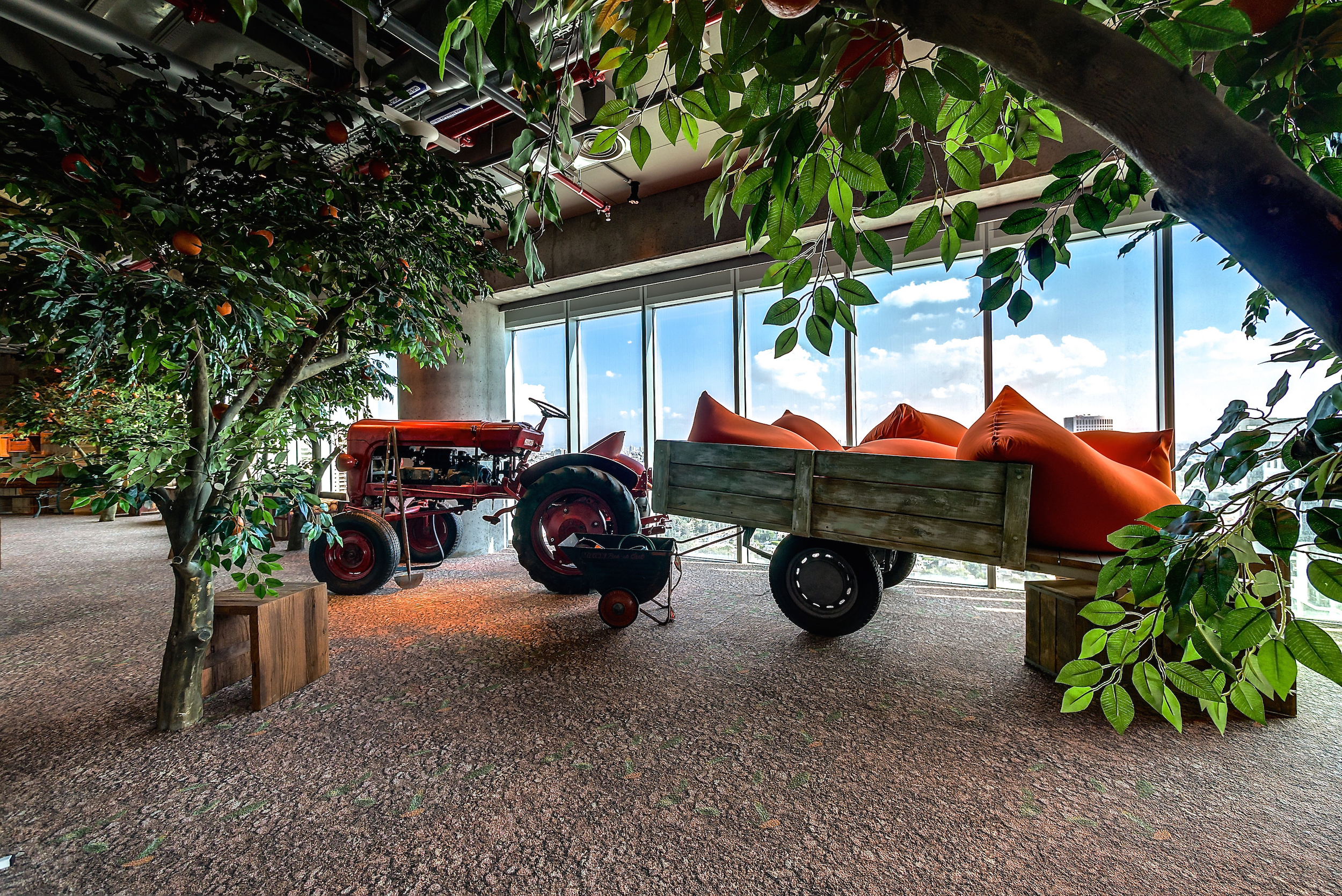
What do the employees think about that? A study conducted in the forefront of Paperworld 2017 deals with the question of how office employees need to work. «Working Spaces 2025» shows that 61 percent of the interviewed German office employees wish to have more flexible structures and a stronger say in the selection and the design of the workplace. Spatial dynamics and a balanced interplay of zones with different characteristics are in demand. According to this, at least three different areas are envisaged for the contemporary office: the communication zone for exchange and knowledge transfer, the concentration area as a refuge and the inspiration zone for relaxation or stimulus for new ideas. Even though the separation between work and leisure tends to be blurred in such office situations, idleness shall definitely not be encouraged. In fact, the idea behind this is that an attractive architectural environment helps to increase the pleasure people take in their work.
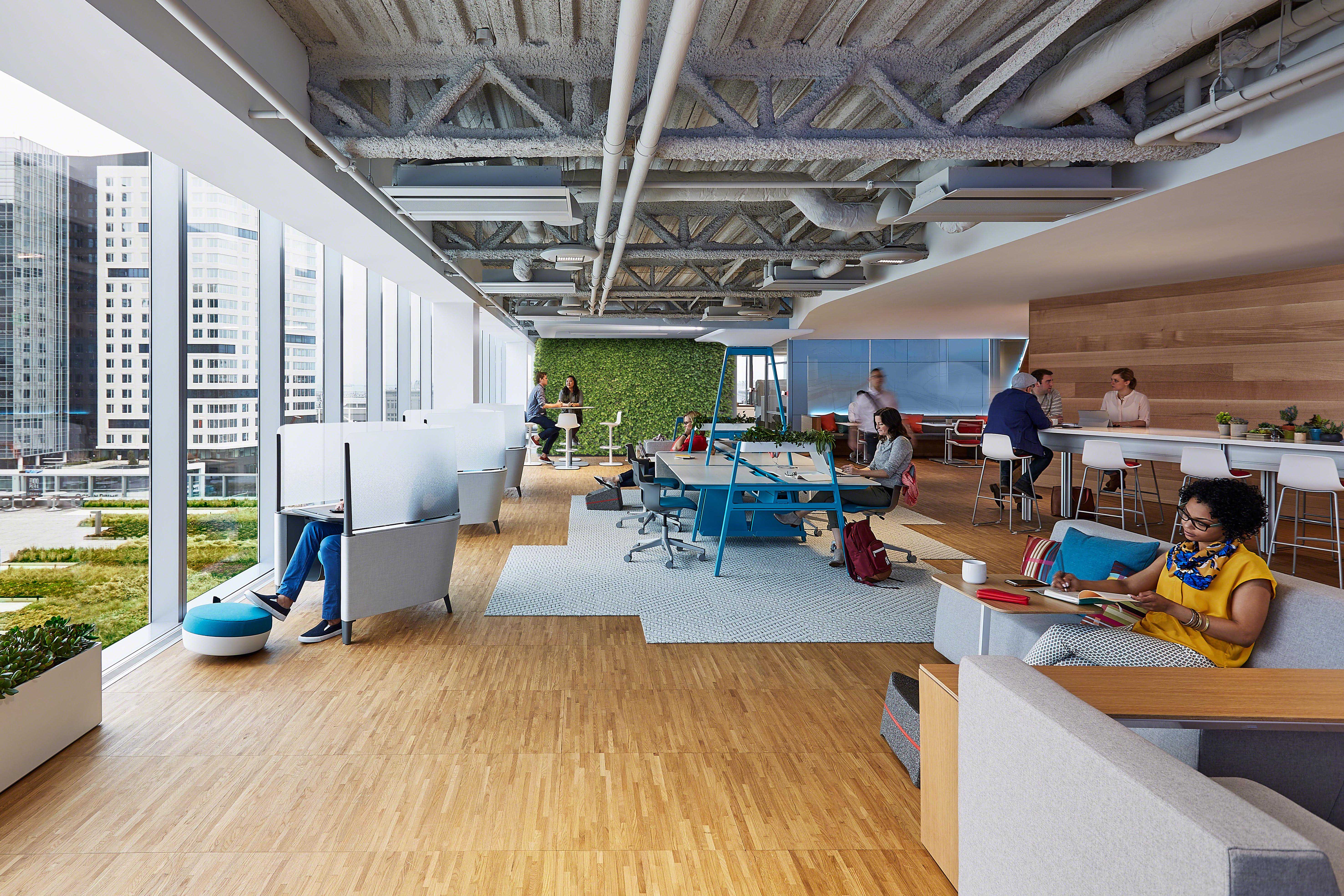
This and much more is presented in the special exhibition « Future Office» (Hall 3.0, Stand C51), which World-Architects.com helped to conceive and which was designed by architect André Schmidt. Here, all people actively involved in office design will get an insight into the development of what will probably be normality tomorrow. Daily lectures and panel discussions with renowned researchers, architects, interior architects, and designers take a look at the «Future Office», while compact guided tours to selected manufacturers provide in-depth information. Beyond the official programme, the special exhibition additionally provides plenty of room for intensive exchanges - or simply for a short coffee break in the hustle and bustle of the trade fair.
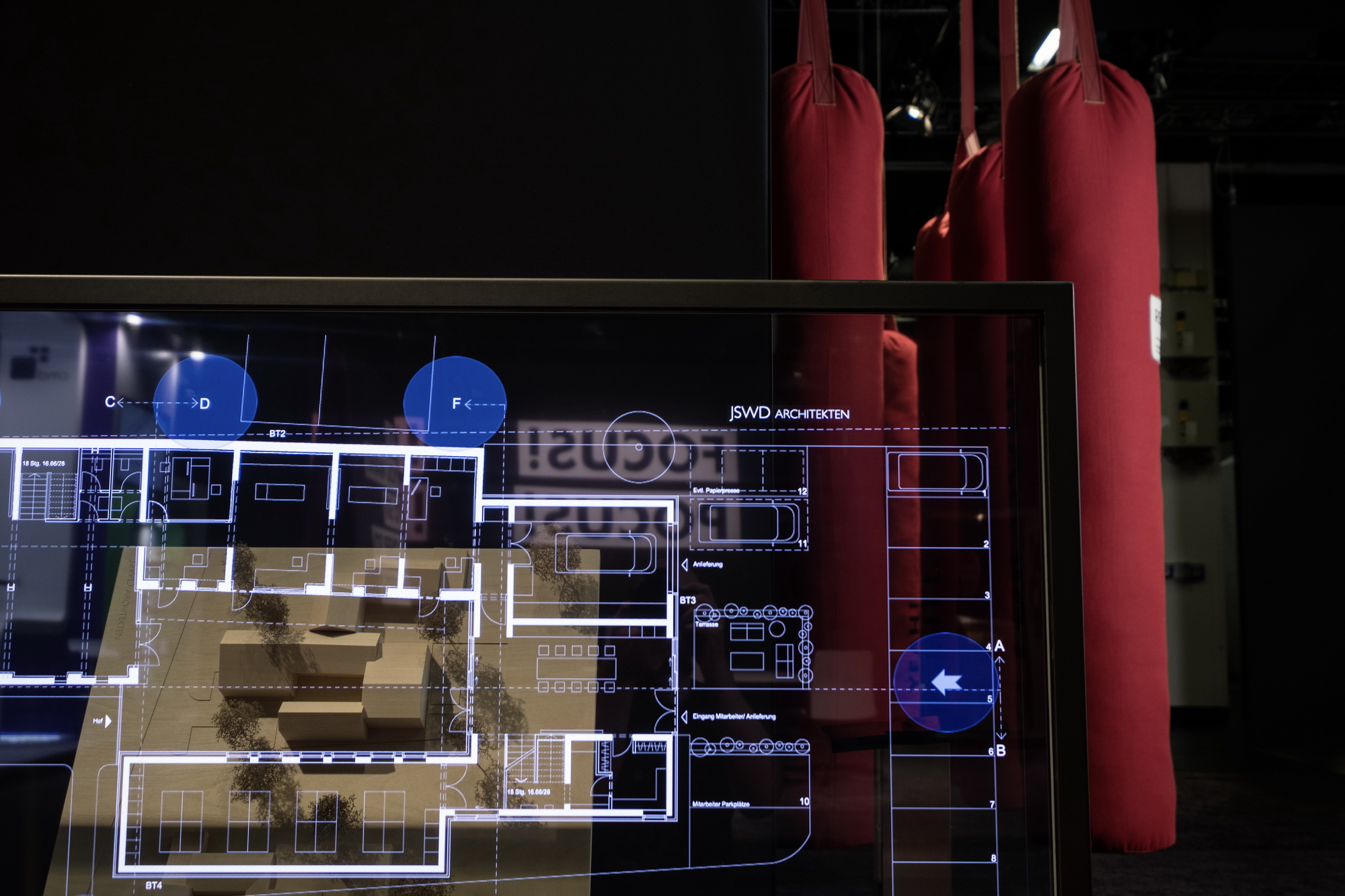
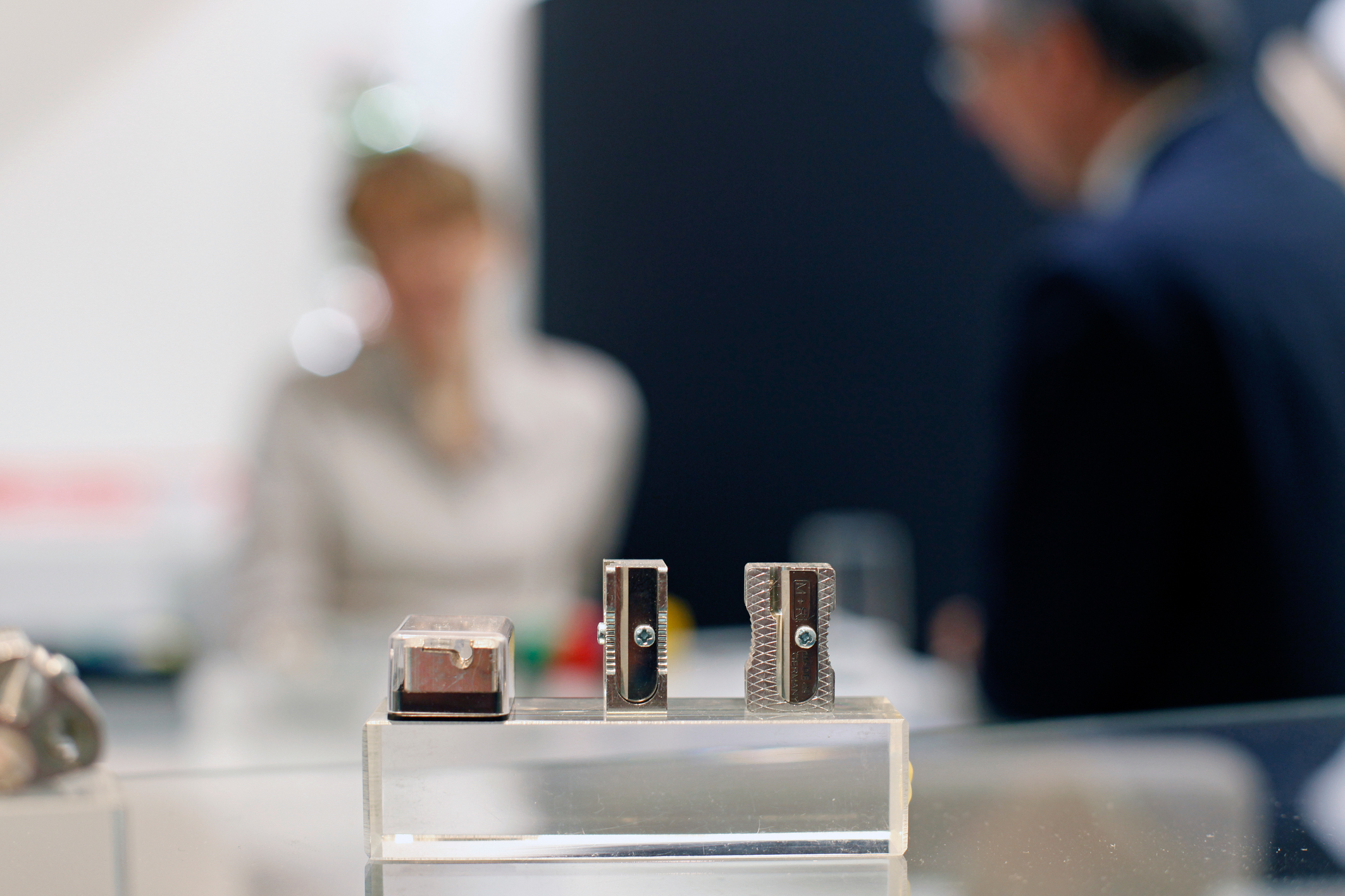
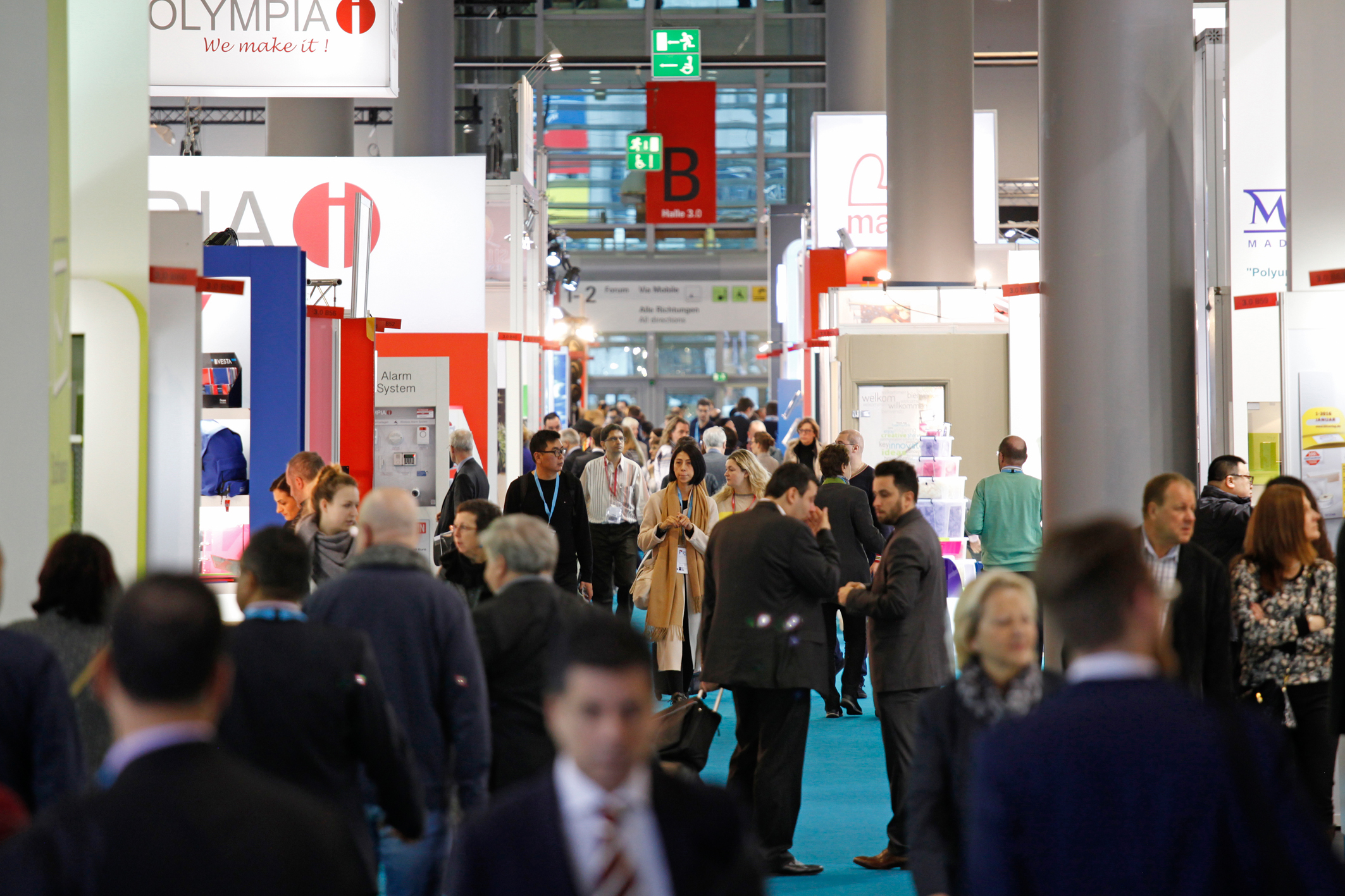
- Kooperationspartner
- Architekten- und Stadtplanerkammer Hessen | Matter | World-Architects
- Fa. Anker | Fa. Durable | Fa. Ideal | Fa. Jung | Fa. Legamaster | Fa. Maul | Fa. Nils Hoger Moormann | Fa. Novus Dahle | Fa. Officebricks | Fa. Schneider | Fa. Tesa | Fa. Wilde + Spieth
- Produktsponsoren
- Peter Petz [email protected]
